#most expensive comic book 2018
Explore tagged Tumblr posts
Note
I just ordered all of Jodie's era on DVD (I'm a physical media lover) and can I say how wonderful and ironic it is to see the thousands of top star reviews for her merchandise and how stuff like certain figurines and her TARDIS figurine are either totally sold out or priced up hundreds of pounds when the haters say she's unpopular and doesn't sell. I mean she even has her officially licensed scarf and everything lol. People love her Doctor.
People seem to take the downward trend of spending during the pandemic as some sort of indictment that 13/Jodie doesn't sell, when in fact in 2018/9 there was a ton of merch that sold just like all Doctor Who merch does, we got the 10inch doll, a barbie, action figures, her sonic, her series 11 funko pop set, 3 novels with matching audio books, 5 YA/Kids books, Comics, games, eaglemoss figures... and thats just off the top of my head and doesn't even include all the generic DW merch... then 2020 came... 13 era merch seemed to vanish... gee I wonder what happened that year that heavily effected the economy, the workforce and businesses, not to mention peoples LIVES? People were losing their jobs, hoping not to get sick, dealing with having sick loved ones and trying to make sure they had enough toilet paper somehow I don't think any shows merch was top of peoples minds, and businesses that were essential to making merch were losing money, making it harder to make things!
I don't believe there has ever been a problem with 13/Jodie selling, unfortunately during her tenure one of the most disruptive events in our generation happened and merch wasn't a priority and even made for fans to buy during that time due to the conditions, restrictions, and economy to know if it wouldn't sell, so its a ridiculous argument.
But as you said theres also a number of items of her merch that are not only expensive if you want one now but you'll be lucky if they even come up for sale because clearly people want to keep them.
For example... 13 Build a Bear, 13 Blush bear from Children in Need, the 2018 SDCC 13 Pop, the 1/5 signature edition Big Chief Studios figure.
You want any of these not only will you have to wait who knows how long for one to come up to buy but expect to be paying a small fortune... However you want a 10th Doctor Build a Bear? They are on Ebay now, more pricey then buying originally from Build a Bear but no where near as much as a 13 Bear when it comes up I've seen 2 come up in 12 months. You want one of the other Doctor Chidlen in Need bears that were release? Yeah you can get them pretty regularly on Ebay too and a pretty good price, head over there now and you'll find them, never seen a 13 one for sale, Big Chief Studios figure? You can find most all the other Doctors, 13 I've seen it come up twice in the last 12 months on Ebay, and only 1 was in its original condition so good luck, and hopefully you have a weeks salary you don't need to buy it if you wanted it they are so expensive, you can still find listings for the 2018 SDCC 13 Pop but you got a spare 250+ pounds to pick it up? Haven't seen any other Doctor pops cost that much if you want to get one.
If Jodie was soooooo unpopular why is she one of the most expensive and elusive Doctors to be able to get merch for when she is technically the most recent Doctor with merch you should just be easily able to pick up.
Jodie also recently had prints of an image she painted sold for charity they were not cheap! There was only 50, they were gone in under 1 day.
Haters are just gonna make things up because the truth doesn't fit their narrative.
30 notes
·
View notes
Text
youtube
The Complete Amateur's Guide to Moomin
By popular demand, I have compiled every video in my 'Amateur's Guide to Moomin' into one convenient video, with additional footnotes, corrections, and a newly added section discussing the changes that have occurred with the Moomin series since the publishing of the original videos. Join me as I explore the series' history and its author, Tove Jansson, to discover what we can learn from this peaceful family of trolls.
Special thanks to @marsmombestmom for helping with the Swedish Translation and corrections.
Bibliography:
Augsburger Puppenkiste. Die Muminfamilie, ARD, 1959.
Boel Westin. Tove Jansson : Life, Art, Words : The Authorised Biography. London, Sort Of, 2014.
Bosworth, Mark. “Tove Jansson: Love, War and the Moomins.” BBC News, BBC, 13 Mar. 2014, bbc.com/news/magazine-26529309.
Box, Steve, et al. Moominvalley. Yle TV2 / Sky One, 25 Feb. 2019. 13 x 22 minutes.
Dębiński, Lucjan, and Maria Kossakowska. The Moomins, Episode 1-100, Se-Ma-For, 1977.
Gutsy Animation. “Moominvalley Crowdfunding Campaign.” Indiegogo, 8 Mar. 2017, indiegogo.com/projects/moomin#. Accessed 30 May 2023.
Jansson, Tove, and Elizabeth Portch. Comet in Moominland. Puffin Books, 2019.
Jansson, Tove, and Kingsley Hart. Moominpappa at Sea. Puffin Books, 2019.
Jansson, Tove, and Kingsley Hart. Moominvalley in November. Sort Of Books, 2018.
Jansson, Tove, and Thomas Warburton. Moominsummer Madness. Puffin Books, 2019.
Jansson, Tove. Finn Family Moomintroll. Translated by Elizabeth Portch, Puffin Books, 2019.
Jansson, Tove. Moomin: The Complete Tove Jansson Comic Strip. Drawn & Quarterly, 2010.
Jansson, Tove. Moominland Midwinter. Paw Prints, 2008.
Jansson, Tove. Tales from Moominvalley. Penguin Books Ltd, 2019.
Jansson, Tove. The Exploits of Moominpappa. Penguin Books Ltd, 2019.
Jansson, Tove. The Moomins and the Great Flood. Drawn & Quarterly, 2018.
Karjalainen, Tuula, and David McDuff. Tove Jansson: Work and Love. Penguin Books, 2016.
Lamppu, Eva. “Big in Japan, but Could America Love Moomin?” Reuters, Thomson Reuters, 6 Oct. 2009, reuters.com/article/us-moomins/big-in-japan-but-could-america-love-moomin-idUSTRE59501Z20091006.
Miyazaki, Akira, et al. “Tanoshii Mūmin Ikka.” Tanoshii Mūmin Ikka, season 1, episode 1-78, TV Tokyo, 1990.
“Moomin Characters as Tove's Self-Portraits.” Moomin, 15 May 2019, moomin.com/en/blog/moomin-characters-as-toves-self-portraits.
“Moomin Products in the 1950s.” Moomin, 15 May 2019, moomin.com/en/blog/moomins-in-the-1950s.
Moomintrivia. “Psychology of The Invisible Child.” Moomin Trivia, 10 June 2019, moomintrivia.tumblr.com/post/185491696931/psychology-of-the-invisible-child.
Moyle, Franny. Moominland Tales: The Life of Tove Jansson. Youtube, BBC 4, 2012, youtube.com/watch?v=tYgC0nKyF0g.
“The Story of How Moomintroll Was Born.” Moomin, 12 Jan. 2020, moomin.com/en/blog/the-story-of-how-moomintroll-was-born.
“Who Inspired Tove When Creating Moominmamma?” Moomin, 15 May 2019, moomin.com/en/blog/who-inspired-tove-when-creating-moominmamma.
“Who Inspired Tove When Creating Moominpappa?” Moomin, 15 May 2019, moomin.com/en/blog/who-inspired-tove-when-creating-moominpappa.
Yamazaki, Tadaaki. Moomin, Fuji TV, 1969.
YLE News. “Finland’s Most Expensive TV Show: New Moominvalley Series.” Yleisradio Oy, the Finnish Broadcasting Company, 25 Jan. 2019, yle.fi/a/3-10614150. Accessed 30 May 2023.
#video essay#moominhouse#moominvalley#the moomins#tanoshii moomin ikka#moomin#snufmin#moomin x snufkin#snufmumriken#little my#moomin video#comet in moominland#tove jansson#Youtube
139 notes
·
View notes
Note
Do you think the people complaining about the Sonic movies not being faithful are being entitled? The movies do well at the box office and lots of fans like them, so what's the problem?
It's a weird complaint because historically very few video game movies are ever faithful. Even when we're talking about the most faithful game-to-movie adaptations, there are always things the movies change.
Like, Mortal Kombat, right? It said Scorpion's spear was a little magic lizard living in the palm of his hand.
Go look at a list of every video game movie ever made and tell me which ones are totally, 100% accurate (and AREN'T Japanese anime). You can count them on one hand. And even then, I bet they still make small changes.
Resident Evil, Doom, Alone in the Dark, Max Payne, Silent Hill, Prince of Persia... they all change. All of them!
And the more accurate a movie gets to its source material (the 2018 Tomb Raider, the Warcraft movie, Uncharted) the more boring it is. I mean, jeeze, that Warcraft movie was insanely expensive, it sounded like Blizzard was extremely hands on, and it came and went like a fart in the wind.
A lot of people who make video games clearly want to pretend they're making movies, but video games still require things that definitively make them games. There always has to be a moment where the story steps back and you get to control the characters for yourself. And that's usually stuff like shooting 3000 guys or delivering a shipment of gortusk livers or poking rats with a stick.
And that kind of stuff can and does become entwined enough with the identity of the game that you can't separate it, and it just wouldn't work in a movie. Even tiny tiny narrative stuff is sometimes written in a "video game way." So it has to be changed, because that's not how movies operate.
I should also stress: a movie. Comic books and TV shows get a lot more time to stretch out and establish concepts, characters, and a world. Movies don't. Movies generally have to be two hours or less. And they have to appeal to more than just the hardcore fans who are already familiar with all this stuff, too.
So they make concessions. They trim things down. They restructure the world, the characters, and simplify concepts. The Chaos Emeralds form the Master Emerald now, okay? It's faster and easier to explain it like that. Even a "short" 6-10 hour game is too much for a movie.
The fact these movies are celebrated should be the focus, not whether or not they're accurate. Because most video game movies have never been accurate.
Heck, even that upcoming Super Mario Bros. movie by Illumination isn't being totally accurate, despite people going nuts for its callbacks and references.
Honestly, when it comes to people being that picky, I wouldn't even pay attention to what they have to say. They'll never be happy and they probably don't even realize how harmful it would be to get what they want. What works in games does not translate directly to a movie. Period.
People who focus on "accuracy" watch too much CinemaSins style garbage on Youtube.
16 notes
·
View notes
Text
Unveiling The World's Most Expensive Auction Items
MN auctions have long been platforms where rarity, historical significance, and unparalleled craftsmanship converge, resulting in jaw-dropping price tags. From art masterpieces to rare collectibles, the world has witnessed some truly extraordinary items commanding astronomical prices.
Here's a glimpse into the realm of the world's most expensive auction items. Leonardo da Vinci's "Salvator Mundi" (2017): At the heart of the art world, Leonardo da Vinci's "Salvator Mundi" stands as the most expensive painting ever sold at auction. This masterpiece, depicting Christ as the Savior of the World, fetched a staggering $450.3 million at a Christie's auction in 2017. The buyer shrouded in mystery, secured not just a work of art but a piece of history. Picasso's "Les Femmes d'Alger" (Version 'O') (2015): Another art marvel, Pablo Picasso's vibrant and complex "Les Femmes d'Alger" reached an auction record of $179.4 million at Christie's in 2015. The piece pays homage to the artist's fascination with the harem theme and showcases his mastery of color and form, solidifying its status as one of the most valuable paintings ever sold. Pink Star Diamond (2017): Diamonds are forever, and the Pink Star Diamond, a stunning 59.60-carat pink gem, holds the record for the most expensive diamond ever sold at auction. In 2017, it fetched an astonishing $71.2 million at a Sotheby's auction in Hong Kong. The diamond's rarity, combined with its exceptional color and clarity, contributed to its record-breaking sale.
Jeff Koons' "Rabbit" (2019): Contemporary art made its mark in the auction world with Jeff Koons' "Rabbit," a stainless-steel sculpture resembling a balloon animal. This iconic piece sold for $91.1 million at Christie's in 2019, setting a record for the highest price ever paid for a work by a living artist. Koons' "Rabbit" symbolizes the intersection of pop culture and high art. 1962 Ferrari 250 GTO (2018): In the realm of rare automobiles, the 1962 Ferrari 250 GTO holds the title as the most expensive car ever sold at auction. Crossing the block at RM Sotheby's in 2018, this pristine racing car commanded a staggering $48.4 million. The Ferrari 250 GTO's combination of performance, history, and limited production (only 36 were built) contributed to its record-breaking price. Yuan Dynasty Vase (2010): Antique Chinese porcelain is highly coveted among collectors, and a 14th-century Yuan Dynasty vase proved this in 2010. Unearthed from a suburban London home, the vase soared to a remarkable $85.9 million at auction. Its rarity, age, and exquisite craftsmanship captivated bidders, making it one of the world's most expensive ceramic pieces.
Stradivarius Violin (2011): The timeless craftsmanship of Antonio Stradivari, the legendary violin maker, is revered by musicians and collectors alike. In 2011, a Stradivarius violin known as the "Lady Blunt" sold for an astounding $15.9 million at a charity auction. The instrument's exceptional sound quality, coupled with its pristine condition, contributed to its record-breaking price. Ming Dynasty "Chicken Cup" (2014): A small porcelain cup, known as the Ming Dynasty "Chicken Cup," became one of the world's most expensive Chinese artworks when it sold for $36.05 million at Sotheby's in 2014. Decorated with a simple yet charming scene of a rooster and hen with their chicks, this delicate cup's rarity and historical significance captivated collectors. Action Comics #1 (2014): In the world of comic books, few items hold as much significance as Action Comics #1, featuring the debut of Superman. In 2014, a pristine copy of this iconic comic book fetched $3.2 million in an online auction. Its rarity, coupled with the cultural impact of introducing the first superhero, made it an invaluable collector's item.
Graham's George Washington Gold Coin (2013): In 2013, a 1792 gold coin featuring George Washington's image was auctioned for an astounding $1.7 million. This unique coin, known as the George Washington President Gold Eagle, is one of the earliest examples of coinage in the United States and holds immense historical significance.
These record-breaking auction items showcase the diversity of the market, spanning art, jewelry, automobiles, and collectibles. The world's most expensive auction items not only reflect the extraordinary craftsmanship and historical importance of each piece but also highlight the passion and willingness of collectors to invest in the rarest and most iconic artifacts from human history.
0 notes
Text
Avengers: Infinity War
Avengers: Infinity War is a 2018 American superhero film based on the Marvel Comics superhero team The Avengers. Produced by Marvel Studios and distributed by Walt Disney Studios Motion Pictures, it is the sequel to The Avengers (2012) and Avengers: Age of Ultron (2015) and the 19th film in the Marvel Cinematic Universe (MCU). Directed by Anthony and Joe Russo and written by Christopher Markus and Stephen McFeely, the film features an ensemble cast including Robert Downey Jr., Chris Hemsworth, Mark Ruffalo, Chris Evans, Scarlett Johansson, Benedict Cumberbatch, Don Cheadle, Tom Holland, Chadwickman. . , Paul Bettany, Elizabeth Olsen, Anthony Mackie, Sebastian Stan, Danai Gurira, Letitia Wright, Dave Bautista, Zoe Saldana, Josh Brolin, and Chris Pratt. In the film, the Avengers and the Guardians of the Galaxy attempt to stop Thanos from collecting the six all-powerful Infinity Stones as part of his quest to kill half of all life in the universe.
The film was announced in October 2014 as Avengers: Infinity War – Part 1. The Russo brothers came on board to direct in April 2015, and a month later Marcus and McFeely signed on to write the film's script, which drew inspiration from Jim. Starlin's 1991 comic book The Infinity Gauntlet and Jonathan Hickman's 2013 comic book Infinity. In 2016, Marvel shortened the title to Avengers: Infinity War. Filming began in January 2017 at Pinewood Atlanta Studios in Fayette County, Georgia, with a large cast consisting of mostly actors reprising their roles from previous MCU films, including Brolin as Thanos. Production lasted until July 2017, shooting back-to-back with the direct sequel Avengers: Endgame (2019). Additional filming took place in Scotland, the downtown Atlanta area, and New York City. With an estimated budget of $325-400 million, the film is one of the most expensive films ever made. Avengers: Infinity War premiered on April 23, 2018 at the Dolby Theater in Hollywood, Los Angeles, and was released in the United States on April 27 as part of Phase III of the MCU. Critics praised Brolin's performance, visual effects, action sequences, dark tone and emotional weight. It was the fourth film and the first superhero film to gross over $2 billion worldwide, breaking numerous box office records and becoming the highest-grossing film of 2018 and the fourth-highest-grossing film both worldwide and at the time of release. USA and Canada. It received a nomination for Best Visual Effects at the 91st Academy Awards, among numerous other accolades. The sequel, Avengers: Endgame, was released in April 2019.
#action adventure#movies#marvel#marvel series#action movies#hollywood#avengers#avengers infinity war
0 notes
Text
Suicide Squad ISEKAI: Worlds Collide
In Ep. 572, Millennial Mike and I discuss the discovery of the unique One Ring MTG card, the Anime Expo announcement of Suicide Squad: ISEKAI, Henry Cavill’s final season of The Witcher, and more! Full Topics:
The unique One Ring Magic: The Gathering card, graded as a 9, could become the most expensive Magic card ever, attracting offers of over $2M and potentially impacting the value of Collector Booster packs.
Indiana Jones and the Dial of Destiny, starring Harrison Ford and directed by James Mangold, earned $60 million in North America, received mixed reviews, and is projected to earn $140 million worldwide.
Transformers: Rise of the Beasts' poor box office performance raises concerns for the franchise's future, with delayed releases and a possible Transformers crossover as a last attempt to revive both franchises.
Henry Cavill returns as Geralt of Rivia for his final appearance in The Witcher on Netflix, with the third season divided into two parts and remaining popular on Netflix's daily TV rankings.
Netflix's live-action series adaptation of One Piece will feature the original Japanese anime voice cast to maintain the essence of the beloved franchise.
Naruto's original anime is making a comeback with four new episodes celebrating its 20th Anniversary.
Warner Bros. Japan and WIT Studio announced the production of "Suicide Squad ISEKAI," an anime series based on DC characters, combining the worlds of ISEKAI and the Suicide Squad.
Warner Bros. Pictures plans a potential Dune trilogy, with the third film potentially based on the Dune: Messiah book.
A fire broke out at Warner Bros. Studios lot, swiftly contained with no injuries reported.
The Flash, under James Gunn's watch, is underperforming at the box office, projected to reach only $300 million, making it a financial disappointment for Warner Bros. Discovery.
FOLLOW/SUPPORT MILLENNIAL MIKE: @millennialmike (Mike's Vero) @TheExilesNet (Mike's Twitter) The Ronin Council (YouTube) As always, we appreciate your constructive Feedback, Suggestions, and Questions. You can also leave us an audio question on SpeakPipe. Thank you for the continued love and support! Enjoy the show. Daniel Podcast Awards 2019 || Games & Hobbies (Winner) Podcast Awards 2017 - 2018, 2020 - 2022 || Games & Hobbies (Nominated) Official Site FOLLOW US: - Twitter | @ReasonsImBroke and @TRIBPod - Instagram - Threads - Pinterest - Tumblr - Discord Lounge - YouTube Channel SUBSCRIBE: Apple Podcasts / Spotify / Google Podcasts / iHeartRadio / TuneIn / Overcast SUPPORT THE POD: Getting $1's worth of entertainment and information each month? Support us on Patreon or visit our TeePublic storefront! SPREAD THE WORD: If you're enjoying the show, please head over to iTunes and leave us a rating and a review! Each one helps new Brokettes discover the podcast. Contribute to the Hero Initiative to offer assistance to comic creators facing difficulties. Show your support for the AFSP's efforts by donating to the Autumn Snyder Tribute Fund. CREDITS: Opening/Closing Jingles - Alex Scott Show Logo By - Opanaldiova
The latest episode of The Reasons I'm Broke Podcast!
#DC Comics#DC Rebirth#Comics#Comic Books#Podcast#Batman#Video Games#Gaming#Pokemon#Superman#Movies#TV#Statues#Nerd Up Media#Comic Book Reviews#Reviews#Comic Reviews#Marvel#Marvel Comics#Nintendo#Podcasts#NCBD#New Comic Book Day#New DC Day#Podcasting#Libsyn#Stitcher#TuneIn
1 note
·
View note
Text
Amazon Kindle Direct Publishing (Amazon KDP) is a fast and easy way for authors and publishers to keep control and publish their books worldwide on the Kindle platform. KDP has removed the barriers for people wanting to self-publish by allowing authors to get their books in Kindle stores worldwide. Many authors have completely ignored physical books since the 2012 Kindle gold rush, concentrating primarily on digital eBook sales. As a result, print books were perceived as unimportant, and people predicted their sales would eventually decline. But that didn't happen and probably won't happen, either. Even if sales of digital books have skyrocketed, traditional books are still hugely popular. In light of this, many prospective customers are lost by authors who overlook print. Guide For KDP Book Size Template Print Formatting Self-publishing a print book used to be expensive and dangerous. As a result, many authors (and publishers) were left with enormous stacks of unsold books in which they had made significant financial investments. However, thanks to POD (print-on-demand) technology, books are printed when customers purchase (and pay for) them. The cover design and formatting are the only expenses for the author/publisher. Print-on-demand is a fantastic development for authors, enabling you to capitalize on the sizable print book market while spending as little money as possible. Print books can now be self-published through various channels, including IngramSpark and Amazon's KDP Print on Demand platform. The most user-friendly for independent authors is KDP book size template Print, Amazon's well-established print-on-demand division (it used to be called CreateSpace, but Amazon shut down CreateSpace in 2018 and moved all their printing services over to KDP). How to Measure Your KDP book size template for Printing Over six million copies of books, cards, games, and other items have been printed by PrintNinja since the company's first project was completed in 2009. We've seen everything, from tabbed catalog pages to book covers that serve as drink coasters. One of the most often requested issues we receive during the prepress stage is how to measure your book correctly. Understanding the precise measurements of your book is essential if you want it to come out precisely as you had envisioned it, regardless of the type of project you are publishing. All you need to determine your book's size is: Book \Rulerrobust flat item (such as a book or piece of cardboard)Flat ground The dimension parallel to the spine, known as height, is the first to be considered. Hold the cardboard against your book at the bottom of the spine while placing it on a flat surface. Next, measure from the cardboard with your ruler to the top of the book, considering the ruler's extra length at the end. The breadth, which is the dimension perpendicular to the spine, should be measured similarly. The pictures show these processes to the nearest 1/8 of an inch measure. When printing a hardcover book, the cover sticks out on both sides by about 1/8" from the pages inside. Plan accordingly because a hardcover book that is 6" x 9" will be closer to 6.25" x 9.25". Commonly Book Sizes 6.625" x 10.25" for a comic book 8.5" x 11" for magazines or catalogs Book for children: 8.5" x 11" or 11" x 8.5" Paperback Novel: 6" x 9" or 5.5" x 8.5" 6" x 9" Hardcover Novel 8.5" x 11" for booklets 8.5" x 11" or 9" x 12" for an art book. 8.5" x 11" or 9" x 12" photo book Visit our industry-standard pages for a more thorough overview of typical book sizes, materials, and bindings. Guide For KDP Book Size Template Print Formatting How Do You Determine The Size Of a Book? Measure from the cardboard with your ruler to the top of the book, considering the ruler's extra length at the end. The breadth, which is the dimension perpendicular to the spine, should be measured similarly. There are a few factors to consider when determining the size of a book.
The first is the dimensions of the book itself. The width and height of the book will determine how many pages it can fit. The second is the type of paper the book is printed on. The thinner paper will allow for more pages, while thicker paper will result in fewer pages. The third factor is the font size. A smaller font will allow for more text on each page, while a larger font will take up more space. Finally, the margin size will also affect the number of pages in a book. A smaller margin will allow for more text on each page, while a more considerable margin will result in fewer pages. Final Think It is not easy to determine how big a book is, but there are some clues. The most obvious one is the page count. The page count is usually printed on the lower corner of the book's first page. You can also look at the dimensions of the paper to determine its size. Usually, the dimensions of the article are printed on the back of the title page. The dimensions are given in inches and are generally accompanied by the printer's name.
0 notes
Text
Buckle up. I have a lot to say.
---
I don't really think Tangle was that hyped?
Maybe not so much in the book, but in a 2018 interview with Game Informer regarding his thought process for Tangle's creation, Flynn essentially disparaged the female games cast to imply that Tangle fulfilled a role none of them did:


I hope I don't need to explain what's wrong with the statement "there aren't a ton of female roles within the Sonic franchise" when it has a larger number of girl characters than most other franchises. Moreover, most of them can keep up with the boys.
Note how he downplays the game characters. Amy is not the take-charge leader of Team Rose, but "somewhat active." Rouge's profession as a freelance spy is boiled down to mere "competence," which is somehow negated by her sex appeal. Cream is dismissed as a child, despite the fact that he doesn't downplay Tails as a child when listing the male characters he considers when thinking of the series' most prominent characters.
Amy's tackled Eggman numerous times, as have Cream and Rouge. Cream helped destroy Egg Utopia in her debut game, and Rouge canonically called herself "pretty strong" after defeating Flying Dog.
Blaze is not the only "kick-butt" female character in the cast. Furthermore, implying that a female character's only worth or cool factor lies in their combat ability is sexist.
---
There isn't really a problem about a character being "fawned over" or just respected by other ones.
Except when that fawning doesn't make sense, the character hasn't earned it, or the fawning comes at the expense of a games character. Silver morphed from the naive stoic he is in the games into a gushing fanboy just to infodump about Whisper's role in the war:





The shilling is not limited to just Whisper or Lanolin, either; the comic can't resist hyping up any of its original characters, no matter how small their role.
Amy gleefully dumps any and all responsibilities onto Jewel, to the point of pretty much declaring her the leader of the response in the forest fire arc.





Tails oohs and ahhs at... the fact that Belle is made out of wood.

Clutch, formerly a nothingburger of a villain, is framed as such a chessmaster that someone felt compelled to write an article about how he's surpassed Eggman's threat level:
A Small-Time Sonic Villain Just Became a Bigger Threat Than Dr. Eggman (screenrant.com)





By contrast, aside from maybe Tangle's initial starry-eyed impression of Blaze and Starline's early adoration of Eggman, you hardly ever see this process in reverse. How often have the comic characters shilled the game characters?
---
Heck, when Sonic learns Starline went Stardead he gave the infamous "big oof" line, and he wasn't saying that as a joke, he just didn't give a fuck about that guy.

Which just proves that Sonic is a hypocrite and didn't mean a single word of what he told Surge when he said he was willing to give even Starline and Eggman a second chance. Someone who truly cared about seeing villains turn over a new leaf wouldn't go "lol Fs in the chat, get dunked on, asshole🤪" upon hearing one of them died and now will never get the chance to become a better person. That just renders his Sermon on the Rock a bunch of hot air in retrospect.
I'm not necessarily saying he should have eulogized Starline, but silence would have gone a long way to establish some kind of internal consistency with this uber-moral Sonic. Because as it stands, it comes across as though he lied to Surge in order to morally browbeat her.
He might have had his Sermon on the Rock in issue 50, but "big oof" inadvertently shows us IDW!Sonic's true colors. He only cares about appearing merciful and compassionate instead of actually being merciful and compassionate.
---
Again, Silver kind of is a child, but I digress.
...Really? Silver is the same age as Blaze and equally as powerful, yet nobody would argue Blaze is "kind of a child."
The infantilization of Silver does not exist in the games; it was fabricated by the comic.
---
The Lanolin moment™ was widely criticized by nearly everyone that reads the IDW comics. But one, we haven't seen her for much, and what we've seen of her, she is likely very traumatized from everything that happened to her.
1.) "But one, we haven't seen her for much" - Irrelevant.
This would also be difficult to measure by any objective standard; how many appearances count as "we haven't seen much of her," especially given how much screentime the comic tends to give the OCs? She featured heavily in several issues and had at least one scene dedicated to her insecurities as a leader. Does she need a miniseries in order to count?
2.) "...she is likely very traumatized from everything that happened to her." - Okay, but you would need to apply that standard to everyone.
According to that logic, Whisper would have had no reason to apologize to Tangle for being triggered by Tangle calling their team the "Diamond Cutters." Which... she really shouldn't have felt the need to to begin with, but the comic certainly felt Tangle was owed a lengthy apology, so.
---
Two, nobody really knew who Duo was, and she wasn't the only one against Silver there! In fact, Silver is constantly shown to be suspicious about Duo, and the only one noticing he isn't what he seems.
Wasn't Whisper cottoning onto Duo's schtick too, but was dismissed by the others as being oversensitive due to trauma?
FUCK, WHISPER of all people sided with Lanolin!
Probably because Lanolin did this when Whisper merely grabbed her arm:

Of course she would. Lanolin is unhinged.

And no, before you ask, I'm not taking the scene out of context: Tangle was merely looking at her paddle before Lanolin smacked it away.
---
Cream is a child, she was helping her mom with the food and was left to finish the rest on her own. Two big meanies shows up and ruins everything she worked really hard to do.
Okay, so Cream is a child. Really think about this. Would you leave a child to watch a boiling pan of hot oil unattended? Vanilla could have helped her finish the food, sent her out to buy ingredients, or at least postponed cooking without risking a house fire.
Such are IDW's contrivances: plot comes at the expense of character and common sense.
---
Finally, she's infamously gone a lot™ in the Zombot arc, including having lost her best friend and her mother.
I don't know why people insist that Cream has this long-lasting trauma from the zombot arc when A.) everyone not named Eggman should still be shellshocked, not just uniquely Cream because "she's a child," and B.) the book missed its window of opportunity to show us the effects of that trauma. I don't see any evidence for it. She was back to cheerily baking cookies by the Chao racing arc.
Besides, I very much doubt there was anything in that story to imply zombot-related trauma. IDW is not particularly subtle, so if her tears were indeed the result of zombot trauma, I'm sure there would have been an entire blubbering speech from Cream about how the mean bad guys reminded her of her mom dying, and Vanilla would have comforted her.
Besides, why would the house being on fire and two burglars entering her home remind her of zombots? She wasn't there when Rough and Tumble got turned into zombots.
Also not to shill my own work, but crying is not the only way trauma manifests itself. I used nightmares, sleepiness and a clinginess to her mother to imply Cream was processing the trauma of Eggman kidnapping Vanilla in one of my fics.
---
She's a child under a lot of stress, and I don't blame her for crying, I would've cried too and I'm way older than her.
The problem does not inherently lie with the concept of Cream crying in a stressful situation; it lies in the exaggerated and inaccurate degree. Like the heat that was left on way too high, so too was Cream's occasional habit of crying cranked all the way up.
While Cream has been known to cry sometimes in the games, doesn't do much more than sniffle. She also gets over it fairly quickly.


This is toddler behavior. It's infantilizing, in addition to inaccurate.
Cream began to cry a little when she and Emerl were kidnapped by Eggman's Phi robots and taken to Gimme Shelter in Sonic Battle.
But, bear in mind, that was after watching Emerl fight waves upon waves of enemies, with guilt over being unwilling to fight and being a bystander to Emerl getting hurt (he had to assure her he was having "fun" instead ;A;) adding onto the stress of abduction. You could also argue she didn't want to fight after being forced to help Amy boxercise to the point of exhaustion.
The circumstances are not the same---here she's in her own home, Rough and Tumble are just bullies, and she has Gemerl and Cheese and Chocola to help her.
---
Rough and Tumble are consistently written as dumb asshole losers as well, so them being the ones to haven finally broken the straw on the rabbit's back shows a bit more about Cream than them.
You do realize you're implying that Cream is easily overwhelmed by these F-tier assholes, yes? Cream, the goddess of destruction who tore through Eggman's bases in order to rescue her mother in her debut game? Okay.
---
To say that Starline was hyped and "superior" to Eggman is... kind of a straight up lie.
Explain this, then.


On his first appearance, he is instantly regarded as "just Eggman's obsessive fanboy that might be a bit gay" and while his hypnotic powers are genuinely dangerous (mainly due to the fact that it affects psyche, not physique), he is also kind of a pathetic loser? He overworks his ass off, he is given advice almost akin to dating advice by Zavok (who probably had second intentions himself), he throws a temper tantrum when Eggman "fires" him, he records all his plans (the last thing a villain should do) and everytime he's pitted against Eggman, he gets his ass completely whopped.
You remember when Bad Guys treated "if you emulate Eggman, it will doom you to failure because you'll only be repeating his mistakes" like it was a huge turning point in Starline's character? Only for it to lead nowhere because oops, it turned out Starline "didn't think his plan all the way through"?
Bad Guys did not have the other villains call Eggman's methods "sloppy" and scatterbrained six or seven times - yes, I counted - just for Eggman to pull a victory out of his ass from literally nowhere. That's such a copout.
What was the point of having us follow Starline for 40-something issues only to establish the point that he is small beans compared to Eggman? Something we already knew due to A.) knowing who Eggman is and B.) knowing that Starline stole 90% of Eggman's shit?
There is none. It was all just a huge waste of time.
---
She has a sympathetic backstory, her focal point being how psychologically damaged she is (and to an extent, Kit as well), and her entire existence being a nightmare, "created" to be haunted by a non-existent past, a dead creator and someone her life was entirely made around hating.
>>she has a sympathetic backstory
>>"created" to be haunted by a non-existent past
Pick one. Her backstory cannot be "sympathetic" if it doesn't exist. We don't have any frame of reference for what she lost, and so we lack the proper context to feel sympathy for her.
Take Shadow as a contrast. We may not have the deepest portrait of Maria, but what the games do provide are enough for us to tell that she must have meant a lot to him. If the games gave us no idea who Maria was, Shadow's motives would not be nearly as compelling.
I literally cannot tell what it is about Surge's past that merits this kind of sympathy unless you plug in the gaps yourself. Surge even questions her own past a few times, wondering if she and Kit were unwanted or criminals. But because the book refuses to elaborate, we're stuck with playing multiple choice.
It's difficult to take Surge seriously either as a woobie (for the reasons I just mentioned) or as an ultra-badass new rival to Sonic when she flipflops between having panic attacks, Looney-Tunes style hijinks and being handed victories on a silver platter.
Not to mention the hype she receives from the creators---apparently Stanley thinks the events of Forces would have been 10x more difficult on the heroes if Surge were in it. Sure, Jan.
---
I get how some people may be frustrated about certain characters not showing up more, but we have to be aware that characters created for a comic are gonna appear in the comic, this isn't really a Ken Penders situation where the characters show up to save the main guys and never let them act.
1.) The book is entitled "Sonic the Hedgehog," yet for its fiftieth issue, Sonic was nowhere to be seen on the cover. Much Sonic, many wow.
2.) It's not unreasonable to expect a comic book based on a video game to focus on the video game characters. That's why we're reading the book in the first place.
3.) The real reason the book doesn't focus on the video game cast is because the writers feel stunted by writing the games characters. They find it difficult because they can't "develop" them (ie changing them), hence the heavy focus on comic-exclusive characters.
The worst part is, they can't even keep their own characters consistent, either, so it's not a "Sega mandates" issue nearly as much as it is a skill issue. They're not doing any better in developing the comic characters because half the time they flanderize them for the sake of plot anyway. Belle is afraid of her own shadow under Stanley's pen but screams at Starline under Flynn's; Surge flipflops between being a cool badass and a woobie we're supposed to be rooting for depending on whatever reaction the writer wants to wring out of us at the time; Starline was touted as more thorough and meticulous than Eggman, yet lost because he "didn't think [his plan] all the way through." And I swear Tangle loses IQ points with every issue.
It really is not just annoying, but also somewhat sad, that IDW characters can never have a meaty role without shamelessly upstaging a game character. It's the ultimate play of insecurity.
Tangle gets touted as the Sonic Female of All Time while the crewmembers drag the game females through the mud.
Whisper gets randomly fawned over by Silver and Jet of all guys.
Lanolin humiliates Silver and treats him like a child.
Rough and Tumble are too much for Cream the OP to handle.
Starline was hyped up for an extended period as Eggman's superior (no, his final fate did not undo sitting through his agonizing "Sonic VS Eggman is routine" soapboxing).
Surge is being hyped up for even longer as the most badass villain and the most badass character period, despite having absolutely nothing of merit to show for it.
Is it really that hard to find a middle ground? I get you want your character(s) to do big things and be a legitimate part of the cast instead of sitting in the background with their thumbs twiddling, but this is not the way to do it. Trip was only recently introduced to the series, and she found her place just fine. She didn't need to effortlessly beat up Sonic in concept art in order to earn her stripes. She didn't need her creators to brag that she would improve Forces through her mere presence in order to cement her value.
Look. I talk a lot about Trudy. I talk a lot about her role in my fic, her interactions, her dynamics, her abilities, her quirks, all that good stuff. I take her role in the story quite seriously, and in an age where it's become taboo to have your OC do literally anything with the game cast (because overcorrection), I've stuck to my guns and made her a big part of the fic.
But - and this is a big but - none of this comes at the cost of the other characters, or the story as a whole. Sonic is still Sonic, and acts as you'd expect from him. Tails is still Tails, and isn't dismissed by the narrative as a mere sidekick to prop up Trudy as the "true" hero by comparison. Amy is still her bubbly self, not morphed into a Sally clone. Cream is still capable, despite her youth and innocence, and her bond with Trudy doesn't reduce her to literal baby. Eggman treats Trudy no differently from the rest of the cast, and he sure as hell doesn't show any fear at the prospect of facing her. Stellar is not little more than The Trudy Show: it's Sonic's latest adventure in a new land that Trudy happens to be tagging along for, and how he leaves an impression on her. Just like Unleashed did with Chip, and Secret Rings did with Shahra, among other examples.
Even Sonudis, for as Never Going To Happen In Canon For Very Obvious Reasons as it is, is still made with the mentality of not only what Sonic himself is actually like in canon, but the others too. It's not a shallow bait that exists solely to exist, it's something I took seriously in regards to how it could potentially work without sacrificing Sonic's official characterization. Is it a fanfic cliche? Is it self-indulgent? Maybe, but writing fanfic in general is inherently self-indulgent. The sooner you accept that, the better. But as fanfic-y as some concepts may be, I still try to portray them as naturally and as faithfully as I can in respect to the games that spawned this franchise. That includes not reducing Sonic to a lap dog with no independence or backbone.
You can make your character important, and even give them a risky role if you're daring, without disrespecting the game cast and what they contribute to the franchise.
63 notes
·
View notes
Photo
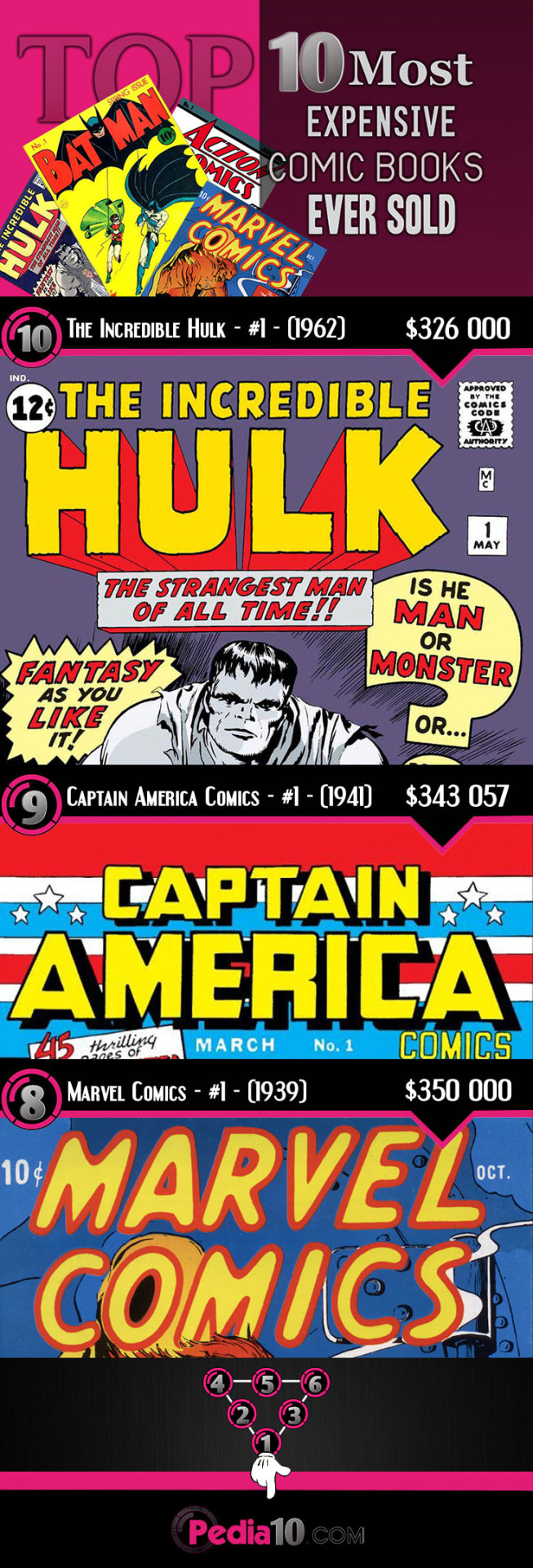
Read More > Top 10 Most Expensive Comic Books Ever Sold
#most valuable comic books of the 90's#most expensive comic book 2018#most expensive comic book ever sold#most valuable comic books of the 60's#most expensive spiderman comic book#most valuable comic books of the 70's#most expensive comic book marvel#valuable comic books list#top 10 most expensive comic books ever sold
1 note
·
View note
Text
Big Hero 6 at 35
A review by Adam D. Jaspering
Big Hero 6 is the story of Hiro Hamada. Hiro is a 13 year-old prodigy with a particular aptitude for engineering, design, and computer programming. When he uncovers a nefarious plot happening in his own city, he takes it upon himself to stop it. He recruits several colleagues to assist, using their skills, discoveries and inventions to create a team of superheroes. Together, they set out to save lives and uncover the truth.

One of the key focal points of the movie occurs early on. Hiro invents a series of microbots, capable of moving, organizing, and creating mechanisms and mobile structures. The invention is so well-received, he earns the attention of two individuals. The first, Robert Callaghan, a professor at the local university. The second, Alistair Krei, CEO of a major tech industry.
Krei promises Hiro a fortune for his invention, setting him on a pathway to prosperity. Unburdened from financial obligations, he’s free to pursue science as he desires. Callaghan promises Hiro a pathway to enlightenment and fulfillment, through education. He insists pursuing science as a virtue, one that shouldn’t be compromised through corporate interests.
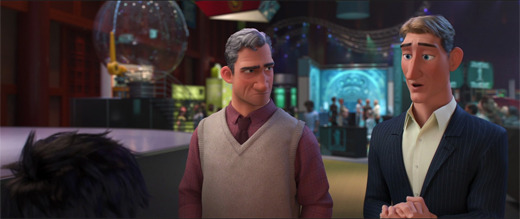
This decision of Hiro’s is only a minor plot point of the film. It introduces two authority figures who influence his actions later. But the ethical dilemmas of who owns scientific discoveries and innovations (and who profits) are never again alluded to. Which is ironic, as it’s a near perfect reflection on how Big Hero 6 came to fruition.
Bob Iger became CEO of Disney in 2005. This was an era when media markets were becoming more competitive and overcrowded. Advancements in technology made accessing and creating entertainment simple. The entertainment industry had more content than ever before. Audience attention was being divided, and advertisers were being choosy. The entertainment industry already had a finite source of income. It was now being divided into smaller and smaller slices.

As a result, companies were conglomerating. Strategic buy-outs could create an umbrella that served many organizations. Larger corporations had the wealth and resources to distribute and market content. Smaller creators and mid-tier companies had copyrighted works and creators. For a price, these mid-tier companies could survive in an inhospitable environment.
However, this also meant creators had to serve the whims of their corporate overlords. Artistic visions were sacrificed or censored for marketability. Worse still, it wasn’t uncommon for the buyouts to result in creators outright losing ownership of their creations. But lets focus on the platonic ideal of such a business model, not the capitalist nightmare it typically is.
Iger oversaw many acquisitions during his tenure as CEO. In 2006, he finalized the purchase of Pixar. In 2012, he purchased Lucasfilm, giving Disney the rights to Star Wars. In 2018, Disney acquired rival studio 20th Century Fox. They owned the company name, studios, and back catalog. The purchase of Fox also gave Disney Fox's stock portfolio. Disney now owned a majority stake in both National Geographic Global Networks and the streaming service Hulu.
Arguably, the most influential acquisition of Iger’s tenure was Marvel Entertainment in 2011. Founded in 1939, Marvel (then known as Timely Publications) has been one of America’s largest comic book publishers. Their characters and stories helped define the modern superhero archetype. Their influence on American culture has been indisputable.

Prior to Disney’s purchase, Marvel’s explorations into film had been hit-and-miss. Marvel was very protective of their trademarks, and offered little creative freedom to studios. Characters and stories were oversimplified to tell rudimentary interpretations of legacy characters. In addition, CGI technology was underdeveloped, but still expensive. Budgets were enormous, and often not worth the price tag.
Making a superhero movie in the late 20th and early 21st century was still a gamble. It was impossible to tell which movies would be successes, and which would fall apart during development. As such, Marvel hedged their bets and worked with many different studios. 20th Century Fox, Sony, Paramount, Columbia, Artisan Entertainment, and New Line Cinema all produced Marvel films. Ironically, Marvel never worked with Disney in this era.
It was 2008′s Iron Man that made Marvel a dominant force in film. Iron Man was the first Marvel film to be produced by Marvel Studios themselves. The paltry sums they earned from licensing their characters were now irrelevant. They could make millions from their own studio. The question was, for how long? Superhero films were still risky ventures. A few financial gambits would risk the entire company.
In 2007, Marvel’s total assets were roughly $700 million. In 2009, the Walt Disney Corporation offered to acquire Marvel Entertainment for $4 billion. The deal was too good to pass up.

This is in stark contrast to the original point. Whereas Hiro passed on Krei’s offer of fortune and glory, Marvel readily took the hefty payday. Big Hero 6 treats ownership of ideas as invaluable. Something more important than money. It’s a virtue that defines Hiro’s character as a good guy. Behind the scenes, the exact opposite was happening. Disney was championing one viewpoint in their films, but hawking an incompatible alternative on the corporate level.
To date, Disney has earned over $18 billion from Marvel properties. Nearly every branch of the Disney empire has utilized the Marvel library. Disney Animation was no exemption.
Choosing Big Hero 6 was the end-result of a one-way road. Disney Animation had to select a property that was family-friendly. It had to be visually stylish and suited to animation. It had to feature upstanding characters. It had work as a standalone feature. It had to be a property Disney wouldn’t want for the Marvel Cinematic Universe.

They chose Big Hero 6, an obscure Marvel property that ran for only eight issues; the first three in 1998, the final five in 2008. The Big Hero 6 comic was a spin-off of the X-Men series, set in Tokyo. The team consisted of shapeshifting robots, ex-convicts, and a giant kaiju. Their villains were literal monsters. One of these villains was a ghost, comprised of the souls who died in the 1945 nuclear attacks on Hiroshima and Nagasaki. It was a very strange comic, and has not been especially well-remembered.
Like any Disney adaptation, there were massive rewrites, overhauls, and bowdlerization. The movie was almost completely stripped of any connection to its source material. The characters were rewritten, keeping only their names and original superpowers. If not their original versions exactly, a closely resembling variant.
The movie begins with a sweeping panorama of the city. No longer set in Tokyo, Big Hero 6 offers an interesting compromise. The film is set in a mash-up version of both Tokyo and San Francisco. “San Fransokyo” features the hilly cityscape of San Francisco, as well as the city’s iconic bay, cable cars, and Painted Lady houses. But its designed with a Japanese flair. Around the city are pagodas, the advertisements and intersections of Shibuya, Japanese lanterns, and Kanji signage all around. The most iconic element of the merger is the Golden Gate Bridge, now comprised of Shinto arches.

It’s a very interesting, unique and engaging setting. The movie takes lots of opportunities to show off its setting. Long montages, establishing shots, many chase scenes set outdoors. The filmmakers went to great effort to create San Fransokyo, and they wanted their audience to see every facet. It doesn’t completely ruin the film’s pacing, but it becomes obvious it’s a primary focus. At what point does a film’s immersive setting swallow a film whole?
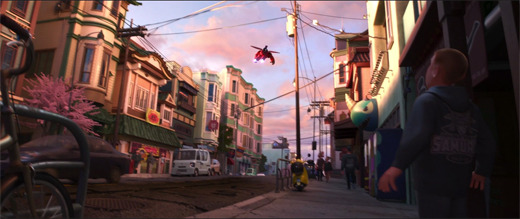
Hiro begins the film rather aimless and restless. A genius by all accounts, he graduated high school before turning 13. With nothing to do and nowhere to go, he’s resorted to building fighting robots, hustling underground robot war tournaments. Partially for a quick payday, partially for a sense of achievement.
It’s the gentle guidance of his brother Tadashi that leads Hiro to enrolling at the San Fransokyo Institute of Technology. The question is, if Hiro was fast-tracked to graduation, why did he never consider higher education until today? Wouldn’t everyone in his immediate sphere be working with Hiro to form a plan?
Nobody would allow a child to graduate five years early arbitrarily. They would have to have a definite purpose and ambition. A goal that they are demonstrably ready to pursue, which redundant schooling would impede. Instead, Hiro gets to sit around the house, bored and detached. The movie deliberately created its own plot hole so it could immediately solve its own plot hole. Hiro needs to be not enrolled in college so the movie can show him enrolling in college.

This opening plot thread has a purpose of intent. A rather noble one, actually. Disney uses Big Hero 6 as a deliberate recruiting device, encouraging its audience to consider a STEM-focused education. STEM (Science, Technology, Engineering, Mathematics) is shown as productive and beneficial to society. It’s depicted as fun and fulfilling. It’s shown to be accessible to all people of all backgrounds.
Tadashi is classmates with three of the six members of the upcoming Big Hero 6 superhero team. Hiro is introduced to them, their works, and their methods. In the original Big Hero 6 comics, these characters were all Japanese. On film, they receive a makeover to represent a wider demographic. This is by intention, furthering the film’s emphasis that STEM education should be available to all.
Advanced education has the unfortunate tendency to favor specific demographics over others. Certain children and teenagers may be discouraged from pursuing a college career path because of numerous factors, institutionalized or personal. If not outright discourage, they’re nudged into disciplines which they may not have a passion or desire for.
Big Hero 6 does its best to undo some of this damage. Tadashi’s classmates represent three different races, but also three different personalities one doesn’t normally associate with the word “scientist.”
Honey Lemon specializes in chemicals and their reactions. She’s a girl with long blonde hair, constantly dressed in skirts and platform heels. She has a strong affinity for the color pink. She’s excitable, chipper, and never apologizes for it. Honey Lemon demonstrates you can be a scientist while still being a girly-girl.
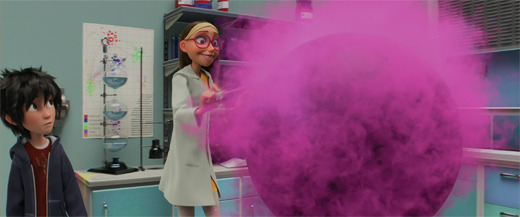
Go Go is developing practical applications for electromagnets. She’s a tough-as-nails punk, commanding respect with her attitude and appearance. She wears a leather jacket, and has a purple streak in her hair. She doesn’t suffer fools gladly, she’s fiercely independent, and always says what’s on her mind. Go Go proves you can be a scientist and a cool badass at the same time.

Wasabi is developing a laser induced plasma fields. He’s a protocol-obsessed neat freak who values order and organization. He’s also built like a linebacker. He’s got pectoral muscles that make him the size of a car. He proves scientists aren’t all pale, scrawny weenies. In all, these three characters show there’s no right way for a scientist to look or act. Anyone can be a scientist.

Or rather, that’s what Disney wanted to say. They took Wasabi’s character one step too far. He looks every bit the jock, but doesn’t act like it. Either in an attempt to soften his edges or flesh out his personality, Wasabi is a gentle giant. It’s not that his body type is misleading; he does possess a physical might, aptly demonstrated during the film’s fight scenes. It’s simply not an accurate reflection of his character. This has the unfortunate implication of stating that the college environment requires a certain level of decorum and obedience. You can be strong and muscular and be a scientist, but you have to toe the line and hide those personality flaws.
Joining these three is Fred. Fred is not enrolled at the university, but a campus employee. He performs as the college mascot. Fred likes to spend his free time at the lab, watching the various developments and experiments. He thinks they’re interesting, and he’s made friends with the students there. He also has an affinity for comic books, eternally nudging the characters into the film’s superhero genre mold.
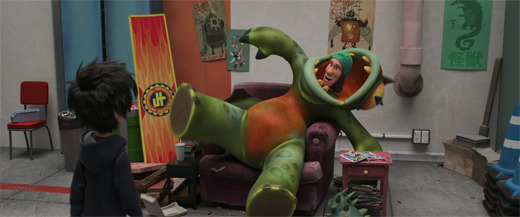
Because Fred has an abundance of free time and an interest in science, one has to wonder why he himself isn’t enrolled. He comes from an upper-class upbringing, so tuition’s not an issue. Perhaps he failed his entrance exam, or his high school grades were too poor. Fred has a childish immaturity about him, but nothing that truly depicts him as an incapable idiot, unworthy of an education. He has every single attribute of being a science major except actually being a science major.
Hiro immediately takes a liking to these four, but the film glosses over the necessary follow-through. These are Tadashi’s friends; he’s spent time with them, developing their friendship over the years. Hiro adopts them as his own by association. They appear in montages and such, but the development apparently happens all off camera. For a film based on the premise of a team, the film fast-forwards through all the necessary teambuilding. They meet Hiro, and they’re all instantly friends.
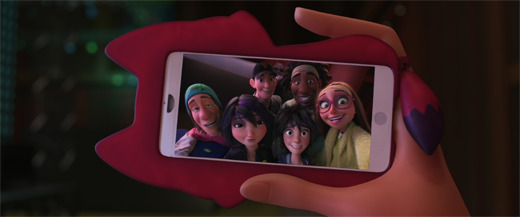
Which is why Hiro organizing them into a superhero team seems strange and off-putting. After Tadashi’s death, Hiro becomes sullen and withdrawn. Tadashi’s old friends do their best to support Hiro in his troubles, but can’t seem to reach him. Instead, he sneaks around in privacy, trespassing in warehouses and investigating the wharfs at night.
Then its revealed that someone is actively trying to kill, or at the very least terrorize Hiro. They’ve stolen Hiro’s microbots, sending a legion of the machines after him. They’re trying to ram him off the road. They’re dropping shipping crates on him. They’re hurling chunks of concrete at his head.

Hiro not only gets his acquaintances involved in this chaos, he asks them to stay involved. He asks them to give up their safety and security to indulge the madness of a kid they barely know. He asks them to put on silly costumes and repurpose their academic life’s work into dangerous weaponry. At a certain point, one expects them to politely but firmly remind Hiro that they like him, but they were really only friends with his brother.
The sixth and final member of Big Hero 6 is Baymax. Baymax is a robot designed by Tadashi prior to his death. The purpose of Baymax was to be an all-in-one medical tool. He can diagnose, treat, and comfort any number of medical conditions, from injuries to illness.

Baymax isn’t the first robot designed by Disney Animation, but he is the best. The struggle of creating an artificial lifeform onscreen is to make them look obviously robotic, but not intimidating or awkward. This means keeping the character deliberately mechanical and metal. This typically results in them looking very stereotypically robotic; uninspired and forgettable.
As the boundaries of the script indicate, Baymax needs to be both a nurturing healthcare provider and a capable crime fighter adept in combat. Two drastically different contrasting points.
Disney succeeds by creating a unique robot. Yes, Baymax has the internal gears, pistons and shafts of any automaton. No, you cannot see them. Nor does he have the classic metallic housing one associates with robots. Instead, Baymax is equally robotic and artificial, but less overtly mechanical. Baymax sports a polyvinyl exterior, inflated like a balloon. This gives Baymax a definite mechanical presence, but also makes him approachable and, for lack of a better word, huggable.

But how does Baymax fight crime? As the movie displays early on, Baymax is essentially a walking blimp. He’s big, he’s awkward, he’s slow, and he’s prone to springing leaks. Not the most adept fighting physique.

The answer has been present for the whole movie: Innovation and application make the world a better place. Honey Lemon fits a portable chemical distillery inside a computerized purse. She can conjure up any number of chemicals in ball form, causing powerful explosions and other inhibiting reactions. Go Go adapts her electromagnetic wheel and axle design into a roller suit. This gives her great foot speed and agility. She can also fire the wheels as projectiles. Wasabi affixes his plasma lasers to a pair of gauntlets. He has powerful punches that can slice through steel and stone. Fred emulates his favorite monster movies. He gets a full-body costume that sports a giant flamethrower.

And Hiro... Well, Hiro is there too. He has a costume, he's present for every fight, but he has no skills. The filmmakers gave him no unique ability or weapon. The closest he has are magnetic couplings he uses to ride on the back of Baymax while flying. He’s the leader of the group, so his superpower is being the generic everyman.
As for Baymax, he gets body armor, a close-quarter combat software upgrade, rocket fists, and a jetpack. This puts him on even grounds with the rest of the team. He doesn’t want to fight, but he does want to protect the rest of his team.

Baymax's autonomy is questionable. At times, he feels like a fully-sentient being. He can think, converse, and make decisions for himself. Other times, he seems full-on automaton. He has a program, he follows the program, and the only way he changes is if his program changes.
Of course, his programming is open to interpretation. Baymax is designed to diagnose and treat medical ailments. When he incorporates psychological care to his roster, his concept of "therapy" is broad. Baymax goes on a long string of errands under the logic that doing so will improve Hiro’s mental health. One thing leads to another, and the medical marshmallow is soon learning Muay Thai techniques. Baymax is either designed very well to learn such a wide range of skills, or designed very poorly to have such exploitable loopholes.
Baymax is one film's strongest elements. He has a unique style and a refreshing presence seldom seen in animation. He has a very laconic approach to everything. He’s calm, unflappable, and unemotive. He states his opinions and observations very matter-of-factly. He is a robot, after all.
But this isn't the only asset Baymax brings to the film. There's an extended sequence where Baymax's batteries wind down. With his processors impeded, he has the mentality and mobility of a drunk. Watching someone stumble around is funny. Watching a stoic individual turn loose and stumble around is hilarious.
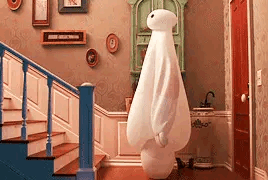
There are also balloon noises. In an extended gag, Baymax receives a few puncture wounds, leaving holes in his skin for air to escape. Why does a polyvinyl robot make the same noises as an ordinary rubber balloon? Who knows. It’s a gag. A long, extended gag. A gag that, if handled improperly, could be an annoying exercise in tedium. But that's exactly the point. The gag goes on so long, it goes from funny, to not funny, all the way back to funny again. It's a risky maneuver, but the movie pulls it off with precision.
Every Marvel movie since Disney's acquisition has used humor and action in tandem. Its one of the strongest contributing factors to the MCU's success. It’s also an essential skill to maintain for a movie like Big Hero 6.
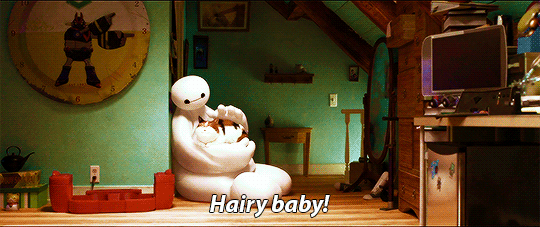
Consider the thematic elements presented in the film: Personal trauma, depression and withdrawal, intense action scenes, killer robots, moments of peril and doom, and adults attacking children. Superhero media has been popular with children since its inception. So much so, it’s easy to forget how violent and mature the genre can be. Big Hero 6 is a kids' movie, but definitely for the older kids, 8 and up. For younger audiences, the kind Disney usually courts, the movie is rather inaccessible.
This limited demographic window hurts the plot structure. In the beginning, every story beat serves the same purpose: get Hiro to organize a superhero team. Tadashi convinces Hiro to attend university because there he will find the resources to become a superhero. Hiro meets his future teammates and sees their skills so they can become superheroes. Hiro reprograms Baymax so Baymax can become a superhero.
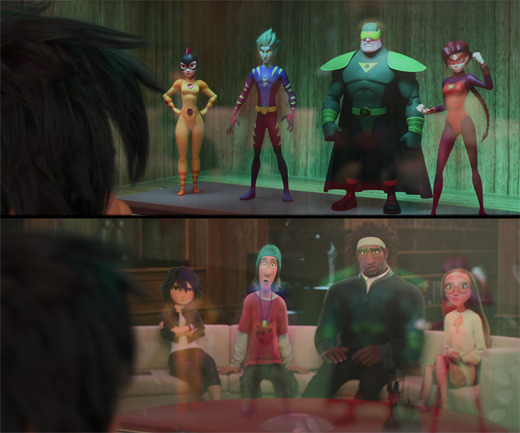
After this, the film prioritizes creating a reasonable villain. After all, superheroes can’t exist if there’s no evil to fight. But a villain can’t just declare their intentions and jump into the world. They’d be arrested. So the villain is a mystery, identified only by his Kabuki mask. His name is a mystery, his face is a mystery, his plans are a mystery, and his reasons are a mystery. They're hidden from the public, hidden from the heroes, and hidden from the viewers.
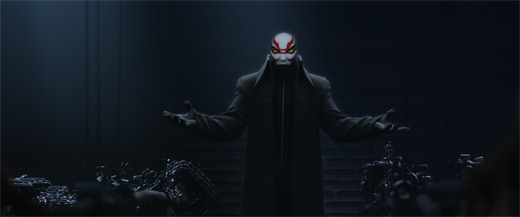
The problem is, hiding the villain’s identity doesn't have the desired narrative effect. The film sets up Krei as a potential villain. He’s mildly adversarial and suspicious. If he was the villain, he would simply be the villain. It would be obvious, and there’d be no point hiding his identity. We all would have reached that conclusion upon his introduction.
Instead, the big reveal is treated as a twist. Our villain is actually Callaghan, the kindhearted, paternal figure. He has a secret traumatic backstory and a thirst for revenge. Callaghan, the character who the movie insisted was important, but lacked any real goals or influence. The character who was nice to the heroes, but quite bitter and hostile towards others. The character who's been suspiciously absent since the first act.
There are only ten characters in this movie, and six are constantly fighting the masked man. Unless Hiro’s Aunt Cass is somehow the villain, there’s only one logical conclusion who the villain is. This mystery element doesn’t serve the film nearly as well as the filmmakers assume it does. It’s the same sort of plot you’d find in any episode of Scooby-Doo, complete with the identity-revealing mask-pull.

Krei’s reckless and cavalier attitude once sabotaged Callaghan's experiments. Callaghan has never recovered from the failure. Hiro’s microbots gave Callaghan the long-awaited opportunity for revenge. This mirrors Hiro’s storyline. Tadashi died in a fire, a horrifying death which Hiro himself has not fully processed. Both Hiro and Callaghan blame others, both want justice, and both succumb to their own rage.
Since we're on the subject, let’s consider Tadashi's death. Him dying may be a required plot element, but Disney chose an incredibly stupid means of death. Tadashi goes out in a literal blaze of glory. The supposed genius runs into a burning building with the intention of saving Callaghan, trapped inside. He does so despite not knowing where Callaghan is, or having any way to protect them both from the inferno. We’re supposed to applaud his bravery instead of his brashness. If we don’t, the movie can’t use his noble death as a motivator. It's an overly-pious suicide mission to emphasize his selflessness. Tadashi deserved a better death scene.

Big Hero 6 is the second Disney film in a row to use depression and grief as a major theme. Hiro's trauma from the death of his brother is an essential element of the film. Disney doesn't sugarcoat the grief. Hiro doesn't get over it or move on. It devastates him until he finds an outlet to process it. He blames Callaghan for Tadashi’s death. He nearly kills Callaghan in an act of blind rage.
While everyone helps Hiro back to reality, it’s Baymax who really reaches him. The entire reason he’s enabled Hiro in this superhero ambition is because he assumed it would help him. But Hiro hasn’t grown or healed at all. He’s only turned his grief into blame into wrath.
Hiro realizes his mistakes. No amount of violence will fix his problems, and it won’t provide any catharsis. The only way to get over Tadashi's death is to honor his legacy. For Hiro to live his best possible life. To honor the values they shared. He later uses this revelation against Callaghan. It's a last-ditch attempt to keep his brother’s mentor from becoming irredeemable.

A noble theme for the movie to embrace, but maybe not from Hiro’s lips. He himself was ready to kill Callaghan in the previous scene. Hiro clearly learned the error of his ways, but the short distance between these two moments is not long enough to demonstrate his growth. He literally learned this lesson eight minutes ago. He sounds like a hypocrite, projecting his own faults.
The final act of healing is closure. Hiro needs to accept Tadashi is gone, but his own life needs to continue. He cannot cling to the past. A harsh lesson that gets reinforced in a bad way.
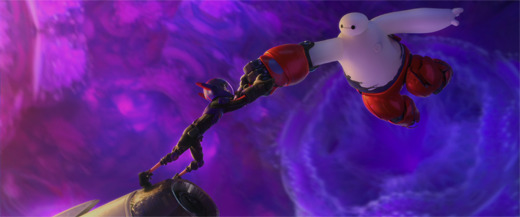
When circumstances are dire, Baymax realizes the only way Hiro can live is if Baymax sacrifices himself. Not just a good friend in his own right, Baymax is the last link Hiro has to his brother. Losing him would be like losing Tadashi for a second time.
And Hiro accepts that. Life is full of ups and downs. People will come and go. Their lives may be short, but their legacies will endure. All we can do is live the best possible life to honor their memory.

Baymax’s death is as genuine and heartfelt as any Disney death, but it’s a fake-out. We forget that Baymax is a robot. He’s a mechanical body with a computer chip brain. Baymax gets a death scene, but can’t actually die. Hiro literally rebuilds him in the film’s epilogue. It speaks volumes to the film’s immersion that any drama or emotion can be mined from this scene.

So often in Disney’s history, the studio has revisited plot points and trends from previous movies. Usually, it's an attempt to replicate success while minimizing efforts. This results in sloppy craftsmanship and second-rate imitations. Big Hero 6 does the inverse, revisiting failed experiments.
Hercules was Disney’s first attempt at a superhero film. The studio didn't fully understand the structure or significance of the genre. Big Hero 6 improves on it, showing a depth and awareness beyond ‘Punch the bad guys until your problems go away.’
Meet the Robinsons tried to demonstrate the importance of innovation and progress. But the movie had nothing more to say beyond showing how great it would be to live in a funhouse. Big Hero 6 demonstrates the methodology of invention and discovery. They’re facets of life. Science and progress are a blank canvas. Powerful if used properly, and exploitable if mistreated.
Brother Bear tried to display the futility of revenge, prompted by a brother’s death. Big Hero 6 goes beyond, showing us that healing involves closure and acceptance. You don’t have to upend or restructure your life to cope with loss. You just have to keep living.
Big Hero 6 even integrates a rock song into a montage, something Treasure Planet tried with awkward results.
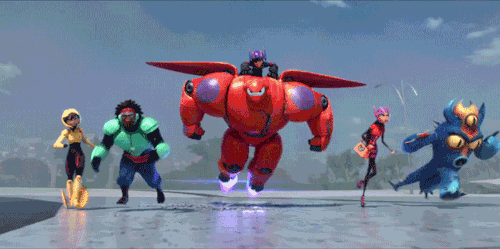
As a result, Big Hero 6 is as a well-made piece of superhero fiction despite faltering in elements beyond its genre. It fudges a lot of storytelling beats, getting characters where they need to be and justifying how they act when they get there. Anything is acceptable as long as it leads to superhero stuff.
And that was always the point. Disney Animation wanted to make a superhero movie. They wanted to make a Marvel superhero movie. That’s exactly what they made, even integrating a Stan Lee cameo. They wanted nothing more and nothing less.

There was no need to fix the problems seen in other Marvel movies, or even acknowledge them. Marvel was a popular brand, and massively successful. Big Hero 6 is a movie about science. But Disney's ironic conclusion was, there’s no point in experimenting if something already works.
Beauty and the Beast Fantasia The Lion King Frozen Snow White and the Seven Dwarfs Cinderella Alice in Wonderland Sleeping Beauty Mulan Tangled The Little Mermaid Aladdin Lilo & Stitch The Many Adventures of Winnie the Pooh Pinocchio The Jungle Book Robin Hood The Sword in the Stone Bambi The Emperor’s New Groove The Hunchback of Notre Dame The Princess and the Frog The Great Mouse Detective Big Hero 6 101 Dalmatians Bolt The Three Caballeros Lady and the Tramp The Rescuers Down Under Atlantis: The Lost Empire Wreck-It Ralph The Fox and the Hound Fantasia 2000 Peter Pan Dumbo Hercules Meet the Robinsons Brother Bear The Black Cauldron Melody Time Oliver & Company Treasure Planet Tarzan The Rescuers Pocahontas Saludos Amigos The Adventures of Ichabod and Mr. Toad Winnie the Pooh The Aristocats Dinosaur Fun and Fancy Free Make Mine Music Home on the Range Chicken Little
#Big Hero 6#Big Hero Six#walt disney#Disney#Walt Disney Animation Studios#disney studios#Disney Canon#marvel#Film Criticism#film analysis#movie review
4 notes
·
View notes
Text
Convention Review: New York Comic Con

( Convention: New York Comic Con
Location: New York City!
Date: October 7-10 (Thurs-Sun)
Table cost: $512 (with fees)
Table size: 6'
Table placement: in the dark half of the hall (L22, I believe)
Items for sale: 11x17" posters (fanart and original), tutorial artbook, coloring book, original comic (sons of fire), zines (fanart and original; sfw and nsfw), pins (original), resin coasters and jewelry
New items/display: Increased commission prices, took posters in backdrop out of plastic sleeves due to glare
Mask policy: Vaccine card required for entry (also the case in many businesses), masks required of all.
Previously attended? Yes, only as an attendee
Transportation: Flew (southwest - hooray for checked bags!), Uber/Lyft, subway, walking (yes, my setup fit in these 2 suitcases... and weighed something like 90 lbs between the two bags)

Pros: One of the two biggest comic shows in the US (the other being SDCC) with a lot of prestige, editors and publishers attend
Cons: Extremely expensive convention in an extremely expensive city, huge artist alley means few people stand out, artist alley was in a hall that had two distinct areas (one of which had a lower ceiling and was more dimly lit, making it seem like an annex area - this is where I was), selective stock due to transportation needs
Most popular item(s): Posters (83), pins (53)
Least popular item(s): commissions (0)
Buckle up, because NYCC is a doozy. Also I ramble, and this is not well organized, thanks ADHD.
New York Comic Con is a show I've applied to for almost a decade, mostly because there is this idea in my head that once I'm good enough to be accepted into NYCC, I've made it as a comic artist (it's a lie). If you've never been, NYCC is a huge show, where big names like Marvel and DC go all out with huge stages and booths, where publishers pay to fly in their top artists and writers, where A-list celebrities announce their new secret projects. It, along with San Diego and C2E2, is one of the biggest shows in the US - and world.
In the past years, NYCC has grown to an audience of 250,000 people (according to wikipedia data: https://en.wikipedia.org/wiki/New_York_Comic_Con), but due to Covid, it was running at a reduced capacity of 150K this year, with a limited number of 3 and 4 day tickets and a concentration on single-day attendance. (For comparison, the 2018 data for SDCC is 130K attendees, according to wikipedia: https://en.wikipedia.org/wiki/San_Diego_Comic-Con) This year, the artist alley was in hall 1A and 1B, which can be opened up to form one giant hall, while the main exhibit hall was on the 3rd floor. While we were next to the autograph lines, the artist alley was still a bit of a trek from the exhibit hall.

Before going, I talked to others I know who had exhibited at NYCC before, and was told things like "you can't help but make money at NYCC." I was also nervous about fanart, as the big boys were there, and while most of the fanart I do is from companies that have more or less said they don't care (funimation, mihoyo), I was still a little nervous (I shouldn't have been, there are people who's entire booths were nothing but pinups of copyright characters).
Covid of course made 2021 a unique experience, and unfortunately a lot of it was not great. I will say I most likely got in due to the fact I was crazy enough to apply to a huge show in the middle of a pandemic. However, as far as I know tables were still as expensive as always even though the attendee count was reduced by over 100K people. Additionally, I was in the darker area, which definitely had less traffic than the brighter area.

I noticed on Thursday that there were a number of empty tables (and even found out via social media that some artists "forgot" they had tables - how do you pay $500 and forget?), and by Saturday many artists had asked permission and moved or spread out (the moving I understand as I wound up doing so as well, the spreading out I still find very unfair). The head of the AA was very gracious and communicative, though, which is rare and amazing in the world of conventions.
New York Comic Con was also the only convention this year I didn't do on my own - a wonderful friend from California had never been to New York City and wanted to go, so they flew out and helped me, as well as saw the city some. The amazing writer, Adam Lance Garcia, author of Sons of Fire, was also there as he lives in the New York area. Thanks to my friend from California, Adam and I were also able to meet with a publisher, and Sons of Fire is now officially joining the Virus Comics lineup!
(Not being alone also meant I was able to look around the artist alley through the weekend. I am a horrible, judgmental person, and I did notice there were a number of artists there that only did pinup work, or fanart, or giant posters. In fact, finding people who did their own original comics seemed to be the minority. And while I understand that the fancy fanart posters certainly bring people to one's table, that's never been my final goal as an artist. Honestly, I find the fanart and resin I do to be stress relief between my real work of book illustration, comics, and commission/freelance work.)
There were some really cool parts to NYCC, like the all-gender bathrooms (though it is a bit awkward to walk into one and find people peeing at urinals just out in the open - but honestly if we put stalls around all the toilets/urinals, then all bathrooms can be all-gender bathrooms) and I got to meet and talk to a ton of amazing artists (though I did run into a lot of them again at other shows), and my friend and I did do touristy things in NYC which I'd always wanted to do (the Empire State Building, 9/11 memorial, and Central Park Zoo), but I have really mixed feelings about NYCC.
(the TL;DR part) Overall, I DID make a slight profit, but only because I did not have to pay for a hotel. 2021 is definitely an unusual year for all conventions, so I can't say definitively that NYCC is a show worth or not worth going to, but if profit is your only motivation I would say there are a lot of other shows to choose from.
In previous years, I've used NYCC as a portfolio review convention, and to network with other artists, writers, and editors, but the only lasting connection I've forged of those has been Adam and our project Sons of Fire. If you ARE going as an artist, having at least one helper and a crew to split hotels and other bills with certainly makes a difference (or knowing someone in town you can stay with). However, when people are seeing 200K+ faces, there's no way you'll really be remembered by an editor or publisher
Gross sales: <$3k
Recommend/will attend again? Unsure - if there's a good reason, or if I'm invited by a publisher I'd figure out how to go, but it is a very expensive show that is hard to justify.
Other 2021 convention reviews: Anime Ohio
Inconjunction Gem City AnimaticCon Westwood Art Show/second saturdays Cincinnati Comic Expo Voltcon Anime Weekend Atlanta Art on Vine Chicago Comic and Entertainment Expo (C2E2) Con+Alt+Delete Anime Zap (2022)
These reviews take a lot of time and effort, but I think they are something the artist alley community needs! If you would like to support me so I can keep doing these, please consider donating or buying from my shops! https://www.paypal.com/donate?hosted_button_id=JBTBC5WRMRTJ2 Storenvy Etsy
#nycc#new york comic con#new york city#convention review#convention#review#artist alley#art life#artist support#heidi black#artist#comic#comics
4 notes
·
View notes
Photo
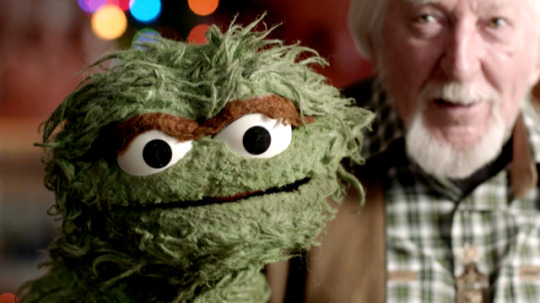
Puppet Love.
Puppeteer Sarah Thomson relives her childhood through the new Sesame Street documentary Street Gang, and recommends 20 more puppetry films for both felt novices and reticulated foam professionals.
To an Antipodean of a certain age, the brownstones of Spike Lee’s Do The Right Thing looked incredibly familiar. Not because we’d ever visited Stuyvesant Avenue, Brooklyn, or even New York, but because they looked like Sesame Street.
Such was the reach and power of the Children’s Television Workshop phenomenon. In making a concerted effort to connect with inner-city children in post-war America’s lower socio-economic neighborhoods, Sesame Street not only platformed and validated those same inner-city neighborhoods within American homes, but had also broadcast a version of them to the rest of the world.
I grew up in New Zealand with a version of that neighborhood as my kind-of babysitter, courtesy of well-worn VHS tapes of Sesame Street and The Muppet Show. And, when I saw Lee’s aforementioned classic (at probably too young of an age), detailing racial tensions and police brutality, wondered whether Oscar the Grouch was in Mookie’s trash can. I also grew up to be a puppeteer. Funny that.
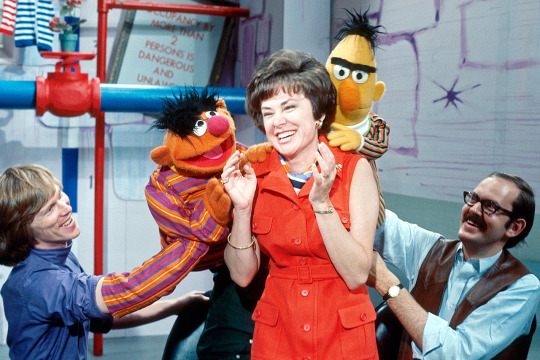
Trailblazing ‘Sesame Street’ producer Joan Ganz Cooney and friends on set.
The notion that entertainment for children could be both educational and compelling; both targeted and of broad appeal, is a notion that has been core to all the children’s entertainment I’ve ever been lucky enough to be involved with. And as Street Gang: How We Got to Sesame Street lovingly shows, it was Children’s Television Workshop—and force-of-nature producer Joan Ganz Cooney—who really wrote that playbook. Making television with heart and attention to detail, but also with all the audience testing and social sciences usually reserved for Madison-Avenue clients, Sesame Street was, as one archival talk-show clip puts it, “what television would do if it loved people, instead of trying to sell to people”.
Not all felt and warm fuzzies, there’s also a bittersweetness to Street Gang. Interviews with the children of seminal figure Jon Stone, composer Joe Raposo, and the legendary Jim Henson lean more than a little into the idea that teaching the world’s children might often come at the expense of your own. And the permeating, unifying political ideology shown in its wonderful archival footage of the Street’s early days is a little lacking on modern Sesame Street, with Frank Oz (the original Bert, Grover and Cookie Monster, as well as Miss Piggy, Animal, and Yoda) dubbing it a “shadow of what it was”.
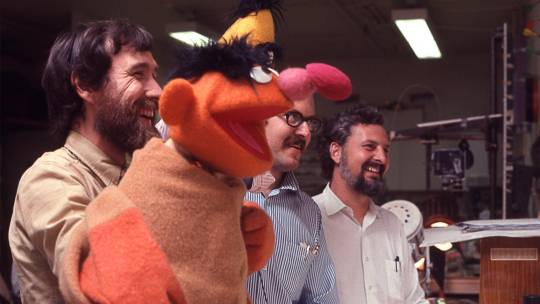
Jim Henson, Frank Oz and ‘Sesame Street’ director Jon Stone. / Photo by Robert Fuhring courtesy Sesame Workshop
But when it was great, god it was great: Stevie Wonder and Grover; Big Bird learning about mortality; Oz and Henson’s sublime Bert and Ernie comic interplay; The Pointer Sisters teaching you to count; hilarious parody; jaw-dropping guest stars; sensational music; and (don’t tell my Muppet family, but) Kermit the Frog’s personal theme isn’t ‘Rainbow Connection’, it’s Joe Raposo’s beautiful, multi-layered ‘It’s Not Easy Being Green’.
Street Gang: How We Got to Sesame Street—based on the book of the almost-same name by Michael Davis, and very much focused on the early years of a show now into its sixth decade—oozes with the same heart and care that the first decades of its subject are full of. Marilyn Agrelo’s film, produced by Trevor Crafts and Ellen Scherer Crafts, is a real love letter to the potential of creativity in education and state-funded content that prioritizes people over profit.
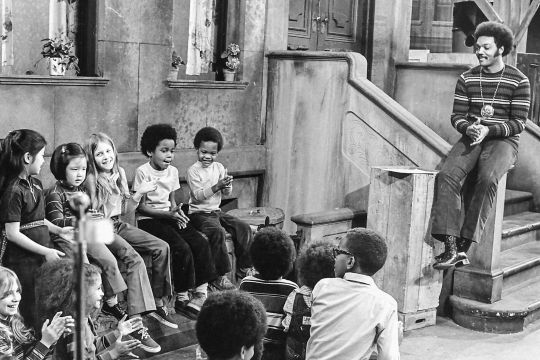
“I am somebody!” Reverend Jesse Jackson and kids on ‘Sesame Street’.
Before he appeared on Sesame Street in 1971, Reverend Jesse Jackson compelled the readers of his column not to miss the 1970 Sesame Street Cast Tour:
“Children shouldn’t miss this as it is one of the most creative and innovative education forms in mass media today. What ought to make you happy is that Black people are involved from the outset. They are everything from production editors and writers to actors and the message of Sesame Street is that children don’t live in a little lily-white world but on streets and in real neighborhoods, in cities as well as suburbs that all types of people are involved in making real.”
48 years later, in 2018, the Sesame Street gang came 8,944 miles to my neighborhood, with Oscar-winning ‘Man or Muppet’ composer Bret McKenzie as their human song partner (the show was in his hometown, handily). Performing live, the characters onstage had helped raise the adults in the audience, now present in great numbers, with their own enthralled children in tow. The gang’s a little different these days (most heritage characters are now in new pairs of very caring hands) but the song remains the same: one of laughter, inclusion and compassion.
In an increasingly fragmented world, with an ever-growing focus on the individual, perhaps the most radical thing we can continue to ask children might just still be: “who are the people in your neighborhood?”.
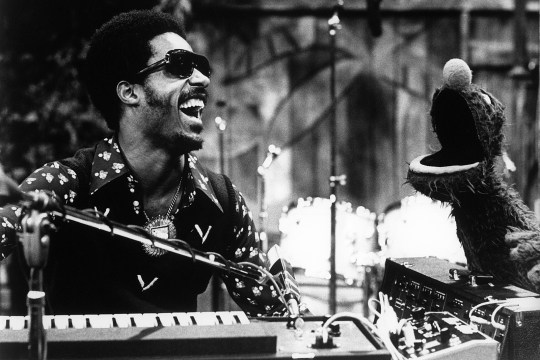
Not enough puppetry in your media diet? Whether you’re a felt novice or a reticulated foam professional, here is a list of twenty further places to travel into the magical realm of puppets.
Related content
Andre’s list of 100 Best Stop Motion, Puppets, Marionettes and Gekimation
Brianna’s Worlds of Puppetry mega-list and dozens more puppetry documentaries
Tom’s list of Muppets feature films and specials
Puppet Movies (That Aren’t The Muppets), a list by TheDude3445
A Filmmaker Five from puppet-loving director Quentin Dupieux
Follow Sarah on Letterboxd
‘Street Gang: How We Got to Sesame Street’ is screening in select theaters and is streaming now on VOD.
#letterboxd#the muppet show#muppets#muppet movie#kermit#sarah thomson#puppetry#puppeteer#jim henson#joan ganz cooney#marilyn agrelo#street gang: how we got to sesame street#street gang#reverend jesse jackson#stevie wonder#grover#bert and ernie#frank oz
7 notes
·
View notes
Text
The Weekend Warrior 10/1/21: VENOM: LET THERE BE CARNAGE, THE ADDAMS FAMILY II, THE MANY SAINTS OF NEWARK, TITANE, MAYDAY, THE JESUS MUSIC
Yeah, so I haven’t had the time over the past couple weeks to write a column, and I kind of hate that fact, especially since I’m coming up on a pretty major milestone for me writing a weekly box office column and reviewing movies. In fact, that milestone comes next week! And once again, I’m struggling to get through the movies I was hoping to watch and write about this week, because I’ve been out of town and once again, very busy over the weekend. Let’s see how far I get...
Before we get to this week’s wide releases, I’m excited to say that my local arthouse movie theater, The Metrograph, is finally reopening for in-person screenings, and they’re kicking things off with a 4k restoration of Andrez Zulawski’s 1981 thriller, Possession, starring Sam Neill and Isabell Adjani, who won a Best Actress prize at Cannes for her performance in the film. I actually saw this at the Metrograph a few years back, and Metrograph Pictures, the distribution arm of the company is now distributing the 4k restoration. There’s a lot of exciting things ahead at Metrograph, including an upcoming four-film Clint Eastwood retrospective, including White Hunter, Black Heart (1990) and A Perfect World (1991) this Friday. Also, Lingua Franca director Isabel Sandoval will be showing her fantastic film from 2020 (a rare chance to see it in a theater and I’ll be there!) as well as program a number of other favorites of hers. Sunday will have screenings of Ingmar Berman’s Scenes from a Marriage (1973) in its full four plus hour glory, Steven Spielberg’s Jurassic Park (1993) and John Carpenter’s In the Mouth of Madness (1994).. In other words, the Metrograph is back!
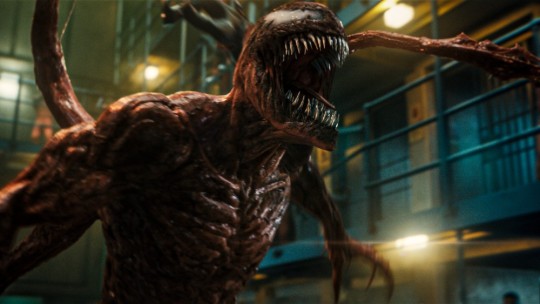
Moving over to the weekend’s three wide releases, the first one up being Sony’s VENOM: LET THERE BE CARNAGE (Sony Pictures) with Tom Hardy returning as Eddie Brock aka Venom, joined by Woody Harrelson as the psychotic symbiote, Carnage. Taking over the directing reins is Andy Serkis, who has only directed two other movies, Mowgli: Legend of the Jungle and Breathe, but as an actor, he’s been heavily involved with the CG VFX (and performance capture) needed to bring the characters in this Marvel anti-hero movie to life.
Venom has been one of Spider-Man’s most popular villains and sometimes allies for quite a few decades now, starting out life as a cool black costume Spider-Man found on a strange planet during the first “Secret Wars,” which turned out to be an alien symbiote that had malicious intentions. Spider-Man got the costume off of him but it then linked up with Eddie Brock, a sad-sack journalist whose emotions drove the alien symbiote to become the Venom we known and (mostly) love, thanks to one Todd McFarlane. Venom continued to play a large part in the Spider-Man books before getting his own comics, and not before a super-villain was created for him in Cletus Kasady, a vicious serial killer whose infection by the symbiote turns him into Carnage. And that’s who Harrelson is playing.
Being a sequel, we do have some basis to go on, although the original Venom movie, released in early October 2018, also arrived at a time when it was only the second time the character of Venom was brought to the big screen -- the first time being Sam Raimi’s Spider-Man 3, in which the character was received without much love as Ryan Reynold’s Deadpool in X-Men Origins: Wolverine. And yet, Venom did great, opening with $80.2 million and grossing $213 million domestically, which is more than enough to greenlight a sequel. (It made over double that amount overseas, too.) For comparison, the Wolverine prequel opened with $85 million but at the beginning of summer, so it quickly tailed away with other movies coming out after it. Venom: Let There Be Carnage has to worry about the new James Bond opening a week later, so it very likely could be a one-and-done, opening decently but quickly dropping down as other big movies are released in October (basically one a week).
I’ve already seen the movie, and by the time you read this, reviews will already be up --including my own at Below the Line. Social media reactions seem to not be so bad though, so maybe it’ll get better reviews than its predecessor, which was trashed by critics, receiving only a 30% rating on Rotten Tomatoes. But if you look at the fan ratings, they’re higher with 81%, although it’s hard not to be
I’m thinking that bearing COVID in mind and the law of depreciation since the previous movie, Venom: Let There Be Carnage will probably be good for around $50 million this weekend, maybe a little more, but however it’s received, I expect it to drop significantly next week, though a total domestic gross of $135 to 140 million seems reasonable.
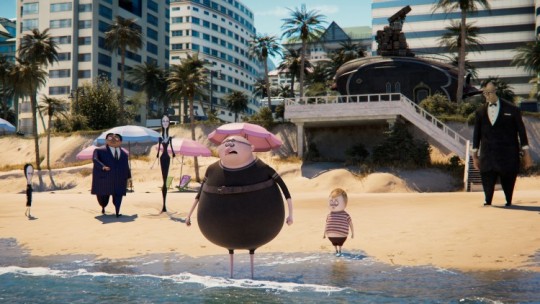
Another strong sequel to kick off October is the animated THE ADDAMS FAMILY II (MGM), which is following up the 2019 hit for MGM/UA Releasing with most of the voice cast returning, including Oscar Isaac, Charlize Theron, Chloe Grace Moretz, and Finn Wolfhard, as well as Nick Kroll, Snoop Dogg, Martin Short, Catherine O’Hara, and Bette Midler voicing the popular characters from the New Yorker cartoons, a popular ‘60s TV series, and two Barry Sonnenfeld movies from the ‘90s.
The 2019 animated film was a pretty solid hit for the newly-launched UA Releasing, grossing $100 million domestic after a $30.3 million opening, making it one of MGM’s biggest hits since it was restructured under UA and became its own distributor again. Who knows what’s going to happen with Amazon’s plans on buying MGM and whether the latter will remain a distribution wing, but MGM still has a number of movies out this year that likely will be awards contenders. But that doesn’t mean much for The Addams Family II, which will try to get some of those people who paid to see the original movie in theaters back to see the sequel… and if they’re not going to theaters, MGM is once again offering the movie day-and-date on VOD much like they did with last year’s Bill and Ted Face the Music, which opened much earlier in the pandemic (late august, 2020), so it far fewer options to see it in theaters compared to this animated sequel.
It’s highly doubtful that The Addams Family II was going to open anywhere near to $30 million even if there wasn’t a pandemic, and it wasn’t on VOD just because MGM just doesn’t seem to be marketing the movie as well as its predecessor. You can blame COVID if you want, but it’s also the fact they’re distributing the company’s first James Bond movie in six years, No Time To Die, on their own vs. through another distributor, ala the last few Daniel Craig Bonds. But we’ll talk more about that next week, since that’s going to be an important movie to help cover MGM’s expenses for the rest of 2021. (I haven’t had a chance to see this yet, but it’s embargoed until Friday, so wouldn’t be able to get a review into the column regardless.)
We’ve seen quite a few family hits over the past few months even when the movies were already on streaming/VOD, but parents are probably being a bit more careful with kids back in school, many younger kids still not vaccinated, and the Delta variant still not quite under control. Because of those factors, I think The Addams Family II is more likely to do somewhere between $15 and 18 million its opening weekend, maybe more on the lower side.
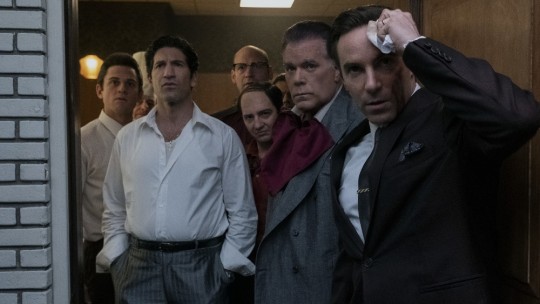
Third up is THE MANY SAINTS OF NEWARK (New Line/WB), David Chase’s prequel to his hit HBO series, The Sopranos, which went off the air in 2004 but still finds fans on the new HBO Max streamer. Ironically, this prequel will air on the streamer at the same time as it's getting a theatrical release, which probably won't be a very tough choice for fans.
Chase has reunited with director Alan Taylor, who won a Primetime Emmy for his work on the show in 2007 before moving onto other popular shows like HBO's Game of Thrones. Taylor has had a bit of a rough career in film, though, having directed Marvel Studios’ sequel, Thor: The Dark World, a movie that wasn't received very well although there were rumors that Taylor butted heads with the producers and maybe didn't even finish the movie. He went on to direct Terminator Genesys, which honestly, I can't remember if it was the worst Terminator movie, but it was pretty bad.
What's interesting is that because this is a prequel set in the '70s and '80s, none of the actors from the show appear on it, but it does star Alessandro Nivola, a great actor in one of his meatiest roles for a studio movie. It also introduces Michael Gandolfini, son of the late James Gandolfini (who played Tony Soprano, if you didn't know), playing the teenage Tony, plus it has great roles for the likes of Jon Bernthal (as Tony's father), Vera Farmiga (playing Tony's mother), Corey Stoll (playing the younger "Junior” Soprano), and Lesile Odom Jr, as the Sopranos key adversary, even though he ends up coming across like the good guy of the movie. It also stars Billy Magnussen, who oddly, also has a key role in next week's No Time to Die.
I'm sure there's quite a bit of interest in seeing where Tony came from and to learn more about his family, many who were dead long before the events of the HBO show, but will that be enough to get them into theaters when they already have HBO? I already reviewed the movie for Below the Line, and reviews are generally positive, which might get people more interested in this prequel.
As with most of Warner Bros’ movies this year, Many Saints will also debut on HBO Max and unlike some of the studio’s other 2021 offerings, it will actually make more sense to watch this one on the streamer since that’s how most people watched The Sopranos. That seems like a killer for Many Saints, and it’s likely to keep it opening under $10 million, where it might have done better on a different weekend (like sometime over the last two weeks).
This is what I have this weekend’s top 10 looking like:
1. Venom: Let There Be Carnage (Sony) - $50.4 million N/A
2. The Addams Family II (MGM/UA Releasing) - $16.5 million N/A
3. The Many Saints of Newark (New Line/WB) - $9 million N/A
4. Shang-Chi and the Legend of the Ten Rings (Marvel/Disney) - $7.5 million -44%
5. Dear Evan Hansen (Universal) - $4.1 million -45%
6. Free Guy (20th Century/Disney) - $3.3 million -30%
7. Jungle Cruise (Disney) - $1.1 million -35%
8. Candyman (Universal) - $1.3 million -48%
9. Cry Macho (Warner Bros.) - $1 million -52%
10. Malignant (Warner Bros.) - .7 million -53%
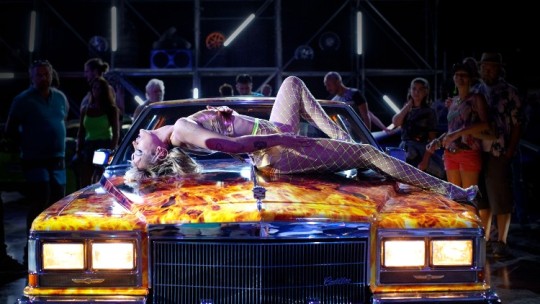
Opening in select cities is French filmmaker Julia (Raw) Ducournau’s TITANE (Neon), the genre thriller that won this year’s coveted Palme D’Or at the Cannes Film Festival. It stars Agathe Rouselle as a young woman who has an interesting relationship with automobiles, but she also has psychotic tendencies that leaves a trail of bodies behind her. On the run, she decides to pretend she’s the missing son of a fireman (Vincent Lindon), who has been missing for 10 years, and things just get weirder from there.
I honestly wasen’t sure what to expect from this although I do remember walking out of Ducournau’s cannibal movie, Raw, just because it was so gross, even though so many of my colleagues and friends swear by the movie, and this one, for that matter. Sure, there’s a certain “prove it” factor to me watching a movie that wins the Palme D’Or, because it’s very rare that I like the movies that do win that benchmark cinema award.
After a flashback to Agathe’s character Alexia when she was an obstinate young girl kicking the back seat of her father as he’s driving. They crash and she’s forced to get surgery that puts an odd looking piece of metal in her head. Decades later, she seems to be a pseudo-stripper at weird punk rock car show -- I guess they do those things different in France -- and hooking up with a fellow “model” afterwards. Agathe is actually a very popular model/dancer but when one fan gets too grabby, she pulls a knitting needle out of her hair and stabs it through his ear, killing him. Oh, yeah, she then has sex with a car and seemingly gets pregnant, but that only happens later. First, she goes on a bit of a killing spree and then goes on a run and decides that by strapping up her breasts and breaking her nose, she can pass off this fire captain’s son… and it works!
So the second half deals with acting great Vincent Lindon’s absolutely bonkers steroid-addicted man who seems to be sexually attracted to his own son, and most of his fellow firefighters knows that he’s gay but in the closet, but I’m honestly not sure what that matters. He’s a pretty disgusting character whose 70-year-old ass we see way too much of, and even those who might find Rouselle to be quite fetching, there’s a certain point where her nudity is not alluring but quite horrifying.
Oh, and at this time, Alexia (or Adrien, as she’s now going) has also gotten significantly pregnant, but it’s not a normal pregnancy because what should be milk from her breasts seems to some sort of motor oil. That’s because she FUCKED A CAR earlier in the movie!!! What do you expect when you fuck a car and don’t use protection, girlie? The fact Alexia/Adrien is trying to hide the fact she’s a pregnant woman from a station full of men isn’t even particularly disturbing. The part that really got me was when she broke her own nose to pass off as this guy’s son -- I actually had to look away for that part.
Listen I’m no prude, and I think I can handle most things in terms of horror and gore, but Titane just annoyed me, because it felt like Ms Ducournau was doing a lot of what we see more for shock value than to actually drive the story forward. There just doesn’t seem to be much point to any of it, and once the movie gets to the firehouse, and we see her interaction (as a young man) with her “father” and his colleagues, it just gets more grueling.
It’s as if Ducournau had watched a lot of movies by the likes of Cronenberg or David Lynch, or more likely Nicolas Refn or Lars von Trier, and thought, “I could be just as strange and horrific as those men… let’s see what people think of this.” And way too many people fell for it, including the Cannes jury. While I normally would approve of any good body horror movie, especially one with cinematography, score and musical selections as good as this one, I doubt I’d ever want to watch this movie again. And therefore, I don’t think I can recommend this movie to anyone either, at least no one I want to remain my friend.
As far as the movie’s box office, NEON is opening the movie in 562 theaters to build on buzz from various film festivals, including the New York Film Festival earlier this week. I think it should be good for half a million this weekend, although maybe it'll surprise me like NEON's release of Parasite a few years back. I just don't see this getting into the top 10 but maybe just outside it.
And then we have a few more movies that I got screeners for but just couldn’t find the time to watch, but might do so once I finish this verdammt column.
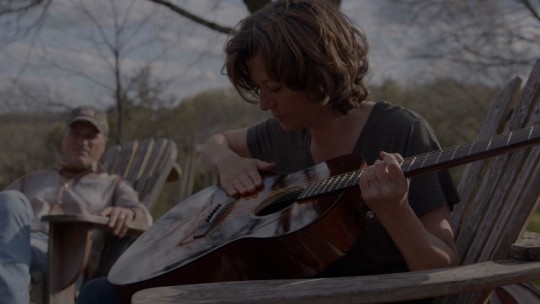
The faith-based doc THE JESUS MUSIC (Lionsgate) by the Erwin Brothers (I Can Only Imagine, I Still Believe) takes a look at the rise of Christian Contemporary Music through artists like Amy Grant and Stryper and everything in between, featuring lots of interviews of the artists’ trials and triumphs. Even though there isn’t much CCM I ever listen to, I’m still kind of curious about this one, since I generally like music docs and this is guaranteed not to be the sex, drugs and rock ‘n’ roll of most of them. I have no idea how wide Lionsgate intends to release this but it certainly can be fairly wide, because the Erwins have delivered at least one giant hit for Lionsgate, and I Still Believe may have been another one if not for the pandemic. It actually opened on March 13, just days before movie theaters shut down across the country, so it's little surprise it only made $7 million domestic. That said, the acts in this one have a lot of fans, and if Lionsgate does release The Jesus Music into 1,000 theaters or so (which is very doable), then I would expect it would make between $1 and 2 million, which would be enough to break into the Top 10.
I haven't seen any of the movies based on Anna Todd's YA romance novels but the third of them, AFTER WE FELL, will play in about 1,311 theaters on Thursday i.e. tonight through Fathom Events, and may or may not continue through the weekend. These movies just kind of show up, and again, having not seen any of them, I'm not sure what kind of audience they have, but this one stars Josephine Langford and Hero Fiennes, as well as Stephen Moyer, Mira Sorvino and Arielle Kebbel with Castille Landon directing.
Grace Van Patten (Under the Silver Lake) stars in Karen Cinorre’s action-fantasy film MAYDAY (Magnolia), playing Ana, a young woman who is transported to a “dreamlike and dangerous” coastline where she joins a female army in a never-ending war where women lure men to their deaths. It also stars Mia Goth, Havana Rose Liu, Soko, Théodore Pellerin and Juliette Lewis. It will be in theaters and On Demand this Friday.
The great Tim Blake Nelson stars in Potsy Ponciroli’s action-Western OLD HENRY (Shout! Studios/Hideout) about a widowed farmer and son who take in an injured man with a satchel full of cash only to have to fend off a posse who come after the man, claiming to be the law. Not sure who to trust, the farmer has to use his gun skills to defend his home and the stranger.
The romantic-comedy FALLING FOR FIGARO (IFC Films) is the new movie from Australian filmmaker Ben Lewin (The Sessions), who I’ve interviewed a few times, and he’s a really nice chap. This one stars Danielle Macdonald, Hugh Skinner, and Joanna Lumley, and it will be in theaters and On Demand this Friday. This rom-com is set in the world of opera singing competitions with Macdonald playing Millie, a brilliant young fund manager who decides to chase her dream of being an opera singer in the Scottish Highlands. She begins vocal training lessons with a former opera diva, played by Lumley, where she meets Max, a young man also training for that competition. Could love blossom? This actually sounds like my kind of movie, so I’ll definitely try to watch soon.
The second season of “Welcome to Blumhouse” the horror movie anthology kicks off on Amazon Prime Video on Friday with the first two movies, Maritte Lee Go’s Black as Night (which I’ve seen) and Gigi Saul Guerrero’s Bingo Night (which I haven’t), and actually I’ll have an interview with Ms. Go over at Below the Line possibly later this week. The former stars Ashja Cooper as a teen girl living in Louisiana who has a bad experience with homeless vampires, along with her best friend (Fabrizio Guido).
Also, Antoine Fuqua and Jake Gyllenhaal’s remake of the Danish film THE GUILTY will begin streaming on Netflix starting Friday after premiering at TIFF a few weeks back. I never got around to reviewing it, but it’s pretty good, maybe a little better than the original movie but essentially the same. I’d definitely recommend it if you like Jake, because he’s definitely terrific in it.
Also hitting Netflix this week is Juana Macias' SOUNDS LIKE LOVE (Netflix), a Spanish language romance movie that (guess) I haven't seen!
A few other movies I didn’t get to this week, include:
STOP AND GO (Decal) VAL (Dread) BLUSH (UA Releasing) RUNT (1091 Pictures)
Next week, it’s not time for James Bond, it’s time for James Bond to die… no, wait… there is NO TIME TO DIE! Also, a very, very special anniversary for the Weekend Warrior….
#The Weekend Warrior#Venom: Let There Be Carnage#Many Saints of Newark#Addams Family II#movies#review#box office#reviews#The Jesus Music#Titane
2 notes
·
View notes
Text
Magikal Musings and Ramblings
SPOILERS AHEAD FOR NEW MUTANTS AND X-MEN TITLES FROM THE 1980s TO THE PRESENT DAY Even though Kispesan is blocking me, and I only read her post because it was reblogged by somebody else, I still wanted to chime in on the discussion she started when she wrote: “How do you feel about all of the focus that Magik gets in comics at the expense of all of her teammates? I swear since Extraordinary she's been written as this uber competent powerhouse who gets a scene showcasing how awesome she is in every issue. Rosenberg's Dead Souls, Uncanny and the Empyre mini were all especially egregious. We barely ever get to see Dani and Shan do anything in comparison.” I’ve been a fan of Illyana ever since I stumbled on Magik #3 at a newsstand at Sangertow Mall in Utica, NY; I can see the book in the comics stand as I write this. Its cover really grabbed my attention. So I was pleased when they brought her back years ago, and I thought she deserved a turn as New Mutants’ team leader. But she has been overexposed...and this isn’t new. I mentioned Magik #3. Looking back, it’s easy to see that the Magik limited series and New Mutants vol. 1 #14-21 were Illyana’s origin story and introduction to the team. So no surprise that the Demon Bear storyline highlighted her sorcerous abilities; Chris Claremont had planned that all along. But he made long-lasting missteps along the way. Rahne calling Illyana things like “Witch!” and “spawn of Satan!” was inexplicably dropped after New Mutants vol. 1 #25. There’s no hint anywhere as to how Rahne and Illyana resolved that conflict, yet resolved they had to have resolved it. One day it was happening, then it was not. And in 2018, Dead Souls #2 had Rahne say that Illyana had “always been weird,” with no hint of how she went from “spawn of satan” to “weird.” Rahne’s religious objections were there when ‘Yana was front and center and then dropped. If Claremont had given it no more thought than that, he’s done his characters a disservice. This leads to the present day and Illyana’s recent exposure. It can be summed up in two words: the movie. It also effected Rahne’s physical appearance in “war children” and may have precipitated retconning in a line about Illyana being “weird,” although I won’t know for sure until I see the movie on Google Play. (When is it getting on Google Play, anyway? Will I be alive then?) The movie also snagged Kitty. It’s cleared to me she was killed off and left dead for several months so Lockheed could bond with Illyana. That way, when people who had met Illyana through the movie would pick up a book which had Lockheed perched on Illyana’s shoulder. And Illyana has been exposed beyond the X-Books, appearing in Savage Avengers. But again, it’s because of the movie; I won’t be surprised if Illyana reappears in the next Dr. Strange movie, and odds are Rahne won’t be in that one. I guess a badass blonde with bangs does well with 18-25 year old males. Ok, with 55 year old ones, too. But as much as I love the character, pushing her like crazy for commercial reasons...it’s just the wrong reason.
Not that it’s all been bad. “Dead Souls” hinted at Illyana’s vulnerable side. And the odd moments between her and Rahne, even if they were the product of the rectal school of creative writing, hinted at an interesting dynamic. It would have been great if the book had become an ongoing series and those issues could have been explored further. Sadly it was not to be. “Dead Souls” came to a crashing halt, Rosenberg fed Illyana and Rahne into his X-Men meatgrinder (killing Rahne in the most ludicrously implausible way possible), and now they are back with no mention of exactly Illyana “came back” or any other issues before. In fact, I can’t think of any moments in the new book when they had any dialogue other than some lines about coffee. I guess whatever Rosenberg had in mind in “Dead Souls” has been forgot about (along with all the men Kitty had relationships with, including the guy she almost married, and how Illyana flirted with Roberto da Costa, but that’s another pet peeve for another time).
And then there’s Dani. Historically, Dani was the leader of the New Mutants. Illyana being leader in “dead souls” was explained as Dani being, um, indisposed. But now she’s back. What are her powers? We’re not seeing them. Is she the team leader? Does the team even have a leader? Is Illyana actually part of the team? If she is, why is she running around in an Aku cosplay instead of the team colors?
And I’m concerned about what the movie might portend for Illyana and Dani’s relationship in the comic, although that is based on a spoiler. But in the aforementioned classic books, an evolving friendship between Dani and Illyana was one of the story points. In New Mutants vol. 1 #18, Dani narrated that Illyana “trusted me with her secrets--things she hasn’t told the X-Men, or even her best friend, Kitty Pryde. It hurts that I won’t do the same.” Going forward to vol. 1 #24, Claremont wrote, “Of all the New Mutants, only Danielle Moonstar has seen Illyana in action within this eldrtich land where her will is absolute law. That experience forged and strengthened the two young women’s friendship.” Yet what I have heard about the movie indicates Dani and Illyana are more adversarial, at least at the start, a complete contradiction of comic book canon.
So what does that mean for Dani going forward? Does she reassert herself as New Mutants team leader, or will she be Illyana’s second banana? Will the team even have a formal leader? And where does Illyana fit in if she won’t wear her yellow and blacks anymore? Will Illyana and Dani be friends, or will there have to be an edge between them because of how they were written in the movie?
So to summarize my long answer to a short question, while Illyana is one of my favorite character’s, she is being pushed too much for commercial reasons, ie the movie. And there is a laundry list of issues involving both her and her relationships with Dani and Rahne that are either being ignored or handled in a way I’m not comfortable with.
#illyana rasputin#magik#rahne sinclair#wolfsbane#dani moonstar#mirage#the new mutants#new mutants movie#new mutants
9 notes
·
View notes
Text
BOOK REPORT 2020
I’ve always been a sparse reader but 2018 and 19 had me accelerate my reading habits to the point that I think I’ve read the most books this year that I ever had. I suppose I’ll count them all here, just to make sure!! I said something or other about the Moomin books at the end of last year’s Inkt*b*r so, this being the month of traditions, let’s make a new one by tallying up my literary “yays” and “nays” at the end of the season.
Video game text boxes don’t count, online publication articles don’t count, psych/aesthetic papers and 1000 page biosemiotic textbooks don’t count, but they have sure pursued me in my sleep during the year as well. This list is really mostly for my benefit (and no I won’t get a Goodreads account tyvm), so under the cut you’ll find a list of titles in roughly the order I read them, along with short notes. I’ve done longer reviews of these books elsewhere and I need not bore you with them here.
K. Stanislavski - An Actor Prepares (1936) I started reading this book in 2012, then dropped it because I couldn’t understand it at the time. Kostya attends acting school and gets lessons from The Director. He learns to sleep like his cat.
K. Stanislavski - Building a Character (1949) Supposed to have been published along the first one in a single volume. Kostya continues his lessons. A lot of thoughts on walking, gaits, eloquent speech, phrasing, etc. Both these books are wonderful looks into the author’s artistic life. It’s very heartfelt and down to earth, considering it’s quasi-fiction made to edutain. Very inspiring.
M. Polanyi - The Tacit Dimension (1966) A book on the origin of knowledge, the integrated performance of skills, the emergence of life and other phenomena in the universe, marginal control between levels of reality, the moral death of the communist regime caused by the unbridled lucidity of the Enlightenment, the responsibilities of science, and thoughts about open societies of the future. This is one of the two shortest books I’ve read in the list, it covers all of this under 130 pages and manages to do it well.
B. Rainov - Eros and Thanatos (1971) A communist propaganda book attacking western mass media and escapist culture. It gets no points for being correct, as the author mostly swiped the truths from french philosophers. Very variable in its intellectual prowess, almost as if it picks its arguments in order to push an agenda. Informative but also infuriating. Also expectedly homophobic.
J. Hoffmeyer - Signs of Meaning in the Universe (1997) A somewhat pop-sciency book about biosemiotics. Forgettable but also humbly written and explicative.
A. Noë - Varieties of Presence (2012) An unimpressive book about sensory perception. Noë’s theory on sensorimotor action is worth considering but the book is poorly edited and mostly spent arguing with peers.
E. Fudge - Quick Cattle & Dying Wishes (2018) A look into a registry of last wills and testaments from the period 1630 - 1650 in Essex. The book is about early modern people’s relationship to their animals and what they meant to them in life, as well as in death. Fudge’s argumentation is sharp and her style is modern. Being a scholarly book it is really overwhelming with the footnotes sometimes, but otherwise satisfying. One gets beautiful glimpses of family relationships, thoughts and feelings that people now dead for 400 years once held.
G. Márquez - One Hundred Years of Solitude (1967) The Buendia family get all their sons killed. The Banana Company sucks. People love each other. A lot happens, generally. It is a hundred years, after all. The upper class sucks.
K. Polanyi - The Great Transformation (1944) The Industrial Revolution sucked. England sucks. It reduced all its workers to subhuman wretches. Every single decision made after the empiricists made labour and land fictional commodities has been a band-aid to the essential contradiction that the market economy wants to annihilate its human host. Laissez-faire sucks. It caused WW1. Fuck everything. Fun book.
R. Coyne - Peirce of Architects (2019) Talks about architecture and the ideas of logician/father of pragmatism Charles Sanders Peirce (1839-1914). Informative about both. Brisk and not very in-depth, but to its benefit rather than its detriment.
R. Williams - Culture and Society (1958) A survey of the 18th and 19th century England, and the emergence of the concept of “culture” as defence against the horrors that the Industrial Revolution inflicted upon society. Consists of some two dozen outlines of contributors to the romanticist tradition, from Adam Smith, through Ruskin, to Orwell, their beliefs, contributions and literary works. Very eloquent and interesting.
E. Fudge - Brutal Reasoning (2006) A fantastic book about much: early modern views of the difference between a human and an animal, the Christian discourse of reason, the logical fallacies that lead to its implosion, the advantageous use of dehumanisation by imperialists in other to genocide natives, Montague and Shakespeare, and the ethical hell of animal murder that led Descartes to deem animals as machines so as to allow his buddies to perform live vivisections on dogs without feeling guilty about it (this is the real reason, don’t let anybody tell you otherwise). There is even space for an entire chapter about an intelligent horse who could tell a virgin from a whore and learned Latin at Oxford. This is my favorite book I read this year, so it gets an extra long review.
R. Williams - The Long Revolution (1961) A sequel to Culture and Society that’s worse. The start and end are brilliant but the middle sags. It contains some historical reviews of English cultural elements, like the newspaper industry, the Standard English vernacular and the realist novel of the 19th century, but honestly if the book was just about about the creative state (intro) and Marxism (outro) it would’ve been fine, if not better.
P. Klee - The Thinking Eye (1956 & 1964) Bauhaus boy in 1920s Germany! Love you Klee, xoxo. You really have to read his thoughts to understand his work imho. You can appreciate it just fine on the surface level, but his completely eccentric (though very self-consistently logical and sharp) views on art creation open a new outlook into his primitive approach.
F D.K. Ching - Architecture: Form, Space & Order (1979) A staple book for architecture students. Or so I hear. Steeped in gestalt psychology. Very good, though not necessarily stuff I don’t know already. Very nice looking pencil illustrations, Ching looks to be an accomplished technical draughtsman.
H. Wölfflin - Principles of Art History (1915) A strong contender for second place in the tier list. The book examines the transition between Classical to Baroque in Italy and Germany (and all the Germany clones, like the Netherlands). It is a systematic, precise aesthetic treatise that reveals much by conceptualizing and grouping characteristic art features in which the two styles differ, then explaining their bearing on their decorative content as well as the outlook on life that they embody. Lovely.
M. Porter - Windows of the Soul: The Art of Physiognomy in European Culture 1470-1780 (2005) A historiographical treatise about early modern views on physiognomy. The book deals mainly with the extant literature on the subject and tries to gleam what it could mean for the customs at the time - palmistry reading, occultism, persecution of the “gypsies” and the Christian scientific project of attaining meaning. Macro- and microcosms, as above so below, hermeticism, that sort of stuff. It’s an interesting read but it’s too long, the quality of writing varies greatly from chapter to chapter, and it is far too expensive. Wouldn’t recommend it.
S. C.Figueiredo - Inventing Comics: A New Translation of Rodolphe Töpffer's Reflections on Graphic Storytelling, Media Rhetorics, & Aesthetic Practice (2017) This is the shortest book I read, mainly translating Töpffer’s 1845 "Essay on Physiognomy" along with giving his biography and some other paraphernalia. It’s not worth the price for the content contained within, but Töpffer is the father of the modern comic book, so I thought I’d learn what his philosophy was. On that front, at least, very interesting! If only I knew French I’d save myself the trouble and read the original, which is now public domain.
D. Bayles - Art & Fear (1985) A useless self-help book. Not entirely bullshit but completely banal from all angles. Shouldn’t even be on this list but I did read it, so...
I. Allende - The House of the Spirits (1982) A child rapist gets a redemption arc. Well, kind of. All women are queens. Men are awful. The poor are wretches and it’s their fault. Oh no, the communists are going to take our land! Pinochet’s concentration camps sucked. Overall a better magical realism book than 100 Years of Solitude, to be honest. Very well written characters.
R. Arnheim -To the Rescue of Art: Twenty-Six Essays (1992) What it says on the tin. Wide range of subjects, from art appreciation, to schizophrenic and autistic child art, to gestalt psychology, to philosophy of science, to Picasso’s Guernica and the fate of abstract art, to reflections on the 20th century and the writer’s life in pre-nazi Germany and America. I love Arnheim, I’ve read many of his books and I’m glad I picked this one up.
R. Arnheim - Film as Art (1957) A book about cinematography, one of his earliest, actually, mostly a personal translation from an original German book he published in 1933. Somewhat outdated, but foundational. Not as informative to me but I don’t regret reading it.
G. E. Lessing - Laocoon; or, On the Limits of Painting and Poetry (1766) A book by a greekaboo about a fucking dumb poem and a statue of a naked dad and his two sons getting fucked by snakes. It’s misogynistic and authoritarian in several places, and altogether awfully full of itself. 100 pages of interesting observations stretched over 400 pages of boring Greco-Roman literary discourse.
L. Tolstoy - Childhood, Boyhood, Youth (1852, 1854, 1856) One story serialized in a magazine then later collated in three separate books. Aristocrat boy grows up in pre-revolution Russia. A very, very relatable coming-of-age story. Tolstoy is a lovely writer.
F. Dostoevsky - Poor Folk (1846) An epistolary novel consisting of letters between literally Dobby from Harry Potter and his maybe-niece, whom he wants to fuck. Starts bad, gets better by the end. A bit rough and tumble for Dostoevsky’s first, so I forgive him for wasting my time a little bit. A decent character study of the middle/lower classes, at least.
L. Tolstoy - Family Happiness (1859) An amazing romance novel for the skill employed in writing it. It is very short yet delivers so much emotion. Rather simple narrative at its core, but executed with such bravado one cannot help but be impressed.
F. Dostoevsky - The Double (1846) In which the Author starts swinging. A pathetic, neurodivergent old man gets used and abused by the people around him and nobody cares. Satirical and biting, better than his first.
A. Lindgren - Pippi Longstocking (1945) I last read this when I was 6 years old so I thought I’d refresh my memory. I remember disliking the book then and I can see why. Pippi’s kind of an asshole. Still very enjoyable to read. I know it’s meant for a younger audience’s reading level yet I cannot help comparing it with Tove Jansson’s books and how much better the prose in there is. Sorry.
***
I think that about rounds them up! That’s about 30 books, give or take. For next year I’m hoping to:
Finish Tolstoy’s and Dostoevsky’s bibliographies
Read more econ and marxist writing (low personal priority but i have to, in THIS economy *rolls eyes*)
Finish the Tintin and Moomin comics, as well as Jhonen Vasquez’s collection of edgy humor
Read more about botany and biology in general
Get started on Faulkner’s and William Golding’s bibliographies
Read more children’s books
Search for more Latin American fiction from the Boom
Read more psych/aesthetics/pedagogy literature, which seems to have become my main area of interest
Thanks for sticking till the end of the list, hope you’ve learned something and maybe you’ll pick one of these up if it took your interest. I don’t have to be a philistine just because I’m drawing video game fanart! Bye now!
3 notes
·
View notes
Text
The Short Lived Career of Kay Kendall by Susan King
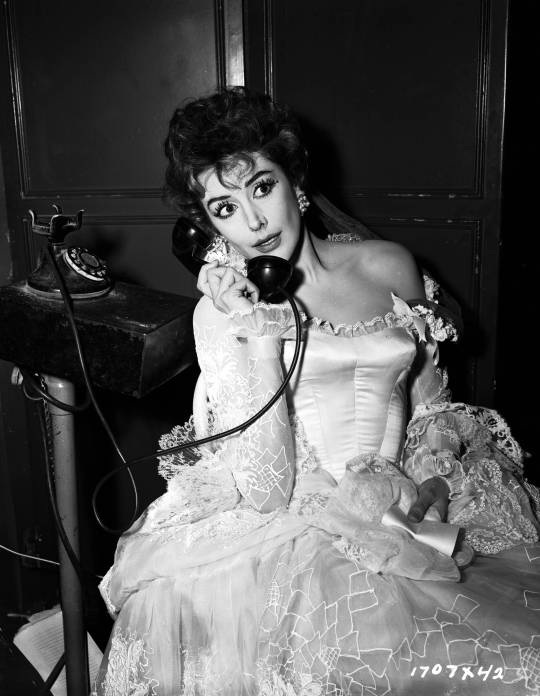
The 60th anniversary of the brilliant comic actress Kay Kendall’s death in September came and went very quietly. It saddened me. Kendall was a real breath of fresh air. A British version of Carole Lombard, Kendall was a beautiful, sophisticated and capable dramatic actress who turned into a slapstick goofball with the right material. And just like Lombard, who was 33 when she died in a plane crash in 1942, Kendall died young at just 32, after succumbing to myeloid leukemia.
“Miss Kendall was that stage and screen rarity, a beautiful clown,” the New York Times obit stated. “The talents of a superb comedienne are so seldom conjoined with statuesque, classic beauty that producers along with Miss Kendall’s hard road to the top tended to distrust her qualities as mutually exclusive.”
In fact, the self-deprecating, often insecure Kendall proclaimed after the release of her best film, 1957’s LES GIRLS, that she looked like a “female impersonator with these long skinny legs. I’m 5 feet [sic] 9. I eat like a horse and I couldn’t become a ballet dancer because I got too big. When I rose up on my toes, I was 10 feet 6 and my feet collapsed.”

Kendall affected those whom she knew and worked with including Mitzi Gaynor, who starred with her in LES GIRLS. In 2018, I was doing a Q&A with Gaynor at the TCL Chinese Theatre in Hollywood for the 60th anniversary of SOUTH PACIFIC and asked her about Kendall. She started to gush about how great Kendall was, but started getting misty-eyed thinking about her, so I quickly went back to the Rodgers and Hammerstein musical.
And I recall one time during an interview, a rather prickly Stanley Donen became effusive when I brought up Kendall, whom he directed in her last film ONCE MORE, WITH FEELING! (’60).
Kendall, who appeared in revues and variety shows as a teenager, got her first big movie role in 1946’s lavish LONDON TOWN, which was one of the British film industry's most expensive flops of the time. She was told by a film executive that she was “ugly, you have no talent. You’re too tall and you photograph badly. Go marry some nice man, settle down and have a nice family.”
She finally got the perfect role in the classic award-winning comedy GENEVIEVE, which was released in England in 1953. The comedy revolved around two young couples who participate annually in a vintage car rally from London to Brighton. John Gregson and Dinah Sheridan were the main stars with Kenneth More and Kendall as the supporting players.
Kendall stole the whole film as Rosalind Peters, More’s high-fashioned overly coiffed model girlfriend who is accompanied by her St. Bernard named Susie. The inventiveness of Kendall's performance, especially when a drunk Rosalind plays a trumpet at a nightclub, is as fresh and funny it was 66 years ago.

Her life changed forever when she made THE CONSTANT HUSBAND with Rex Harrison and released in 1955. And of course, there was a scandal. Though Harrison was married to Lili Palmer at the time, he had a notorious reputation as a womanizer (his affair with Carole Landis in the late 1940s lead to her committing suicide). But the two married in 1957 shortly after Harrison learned from Kendall’s doctor that she had two years to live. Harrison decided not to tell her she was dying, giving her the excuse that she had anemia. Kendall’s own prognosis was never revealed to her, as was common with patients of mortal illnesses in the 1950s. Harrison did tell some of her friends, however, but did not tell her family.
Kendall came to Hollywood to make the Cole Porter musical LES GIRLS, directed by George Cukor and starring Gene Kelly, Gaynor and Taina Elg. Kendall won a Golden Globe for her hysterical performance as the British performer who is being sued for libel by another chorus girl. Kendall and Harrison then starred together in a delightful bit of fluff, THE RELUCTANT DEBUTANTE (’58), directed by Vincente Minnelli. Though sometimes real-life couples have no chemistry together on screen, that wasn’t the case with Kendall and Harrison. Not only do they have chemistry to spare, Harrison even seems to take a back seat in the proceedings and let his wife shine.
In the biography, The Brief, Madcap Life of Kay Kendall by Eve Golden and Kim Kendall, Minnelli’s wife Lee remembered that Kendall and Harrison “were wonderful together. He adored her. You could see when he looked at her, his eyes lit up. They balanced each other perfectly – they played off of each together.” She also noted, “if [Kay] came into a room, she had all laughing in five minutes. Even if you felt a little down, you talked to Kay and by the time you left you were floating, you were up in the air.”
According to the book, by 1958 Kendall was “finding it more difficult to play innocent about her physical condition…Kay was not a stupid woman, and no one can be that sick for that long without knowing something is seriously wrong.” She even told her good friend Dirk Bogarde, who knew she was ill. “Diggy, I think I am dying. I've some terrible disease and they won’t tell me. I think I’ve got cancer.” Bogarde kept his promise to Harrison and tried to laugh off her fears.
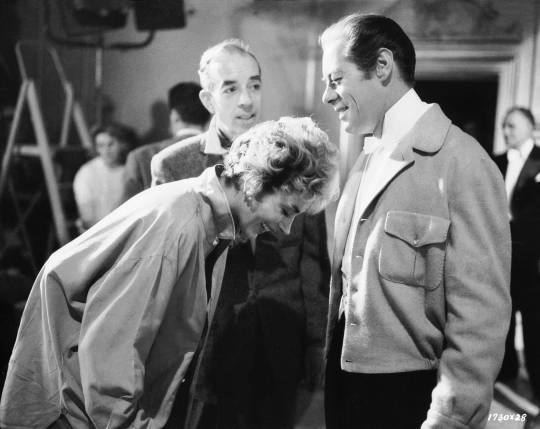
By the time she filmed ONCE MORE, WITH FEELING! with Yul Brynner, she was frail. She eventually collapsed during filming and was hospitalized, with Harrison stating that she had a lung infection and anemia. After she sufficiently recovered, Kendall managed to finish the film. After going on a vacation with Harrison, she returned to London and entered a clinic where she died a week later. Even on her death bed, Harrison never told of the leukemia. According to to her biography, Kendall looked at Harrison and asked, “Mousey, you would tell me if I was dying?” To which he replied, “Don’t be stupid, of course I would. You’re not dying.” Shortly after, she sank into a coma. The press account of her last moments was highly romantic, with Kay sighing to Harrison, “’I love you very much, darling’ with her last breath.” ONCE MORE, WITH FEELING! opened in February 1960. And Bosley Crowther in the New York Times was disappointed Kendall’s swan song wasn’t better. “As for poor Miss Kendall (who has died since this picture was made), she works hard to be disagreeable, to virtually no avail. She screeches and fluffs up her feathers, throws things and breaks television sets, but only succeeds in being feverish. Lacking that obvious essential, she is merely fragile and sad. It is certainly too bad her last picture has to be as vapid as this.” But nearly 60 years after the film release, Kendall’s performance still has traces of manic brilliance and leaves you wondering what she would have done had she had lived.
#Kay Kendall#The Reluctant Debutante#Rex Harrison#TCM#Turner Classic Movies#Susan King#comedienne#actress#Dirk Bogarde
118 notes
·
View notes